Why you can trust Tom's Hardware
AMD Ryzen 3 5300G Application Benchmarks, the TLDR
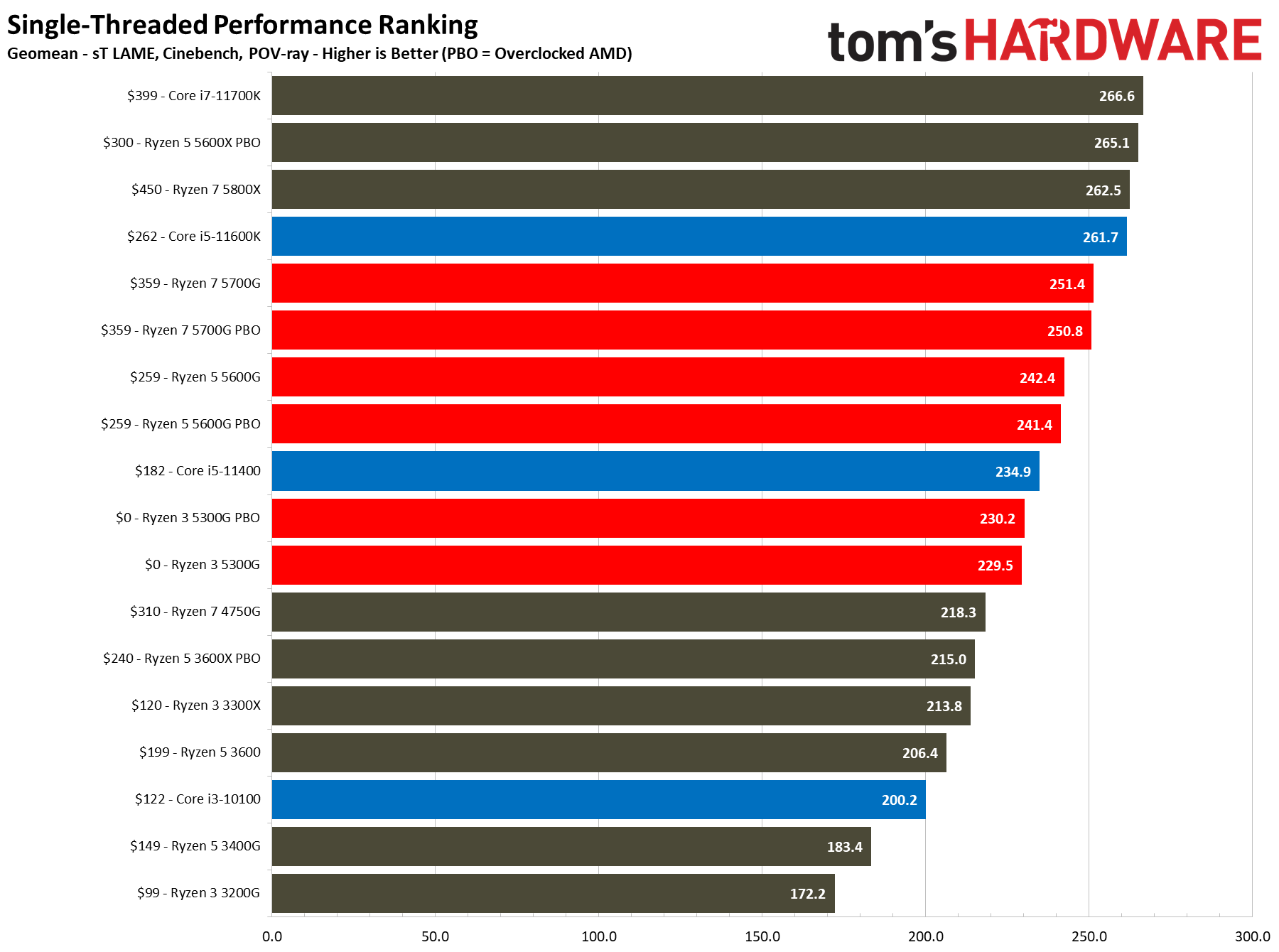

The charts above provide the geometric mean of several of our application tests (listed in the chart title), representing broader trends in lightly- and multi-threaded applications. Be sure to check our application tests below for performance in specific types of applications. To maintain consistency within our test pool, we conducted all of the tests below with a discrete graphics card handling the display output.
| Row 0 - Cell 0 | Single-Threaded | Multi-Threaded |
| Core i7-11700K 8C/16T | 100% | 100% |
| Ryzen 7 5800X 8C/16T | 98.5% | 97.8% |
| Ryzen 7 5700G 8C/16T | 94.3% | 86.8% |
| Ryzen 5 5600X 6C/12T | 94.6% | 76.4% |
| Core i5-11600K 6C/12T | 98.2% | 78.3% |
| Ryzen 5 5600G 6C/12T | 90.9% | 68.1% |
| Core i5-11400 | 88.1% | 71.4% |
| Ryzen 3 5300G | 86% | 46.2% |
| Ryzen 7 4750G 8C/16T | 81.9% | 76.1% |
| Ryzen 3 3300X 4C/8T | 80.2% | 45.4% |
| Core i3-10100 | 75.1% | 39.0% |
| Ryzen 5 3400G 4C/8T | 68.8% | 33.0% |
| Ryzen 3 3200G 4C/4T | 64.6% | 25.3% |
The Ryzen 3 5300G is more impressive in our application test suite than it was in the discrete GPU testing. Here we can see the benefits of the Zen 3 architecture shine. The Ryzen 3 5300G is 25% faster in single-threaded work and 40% faster in multi-threaded work than the Ryzen 5 3400G that also comes with four cores and eight threads. The Ryzen 3 5300G is also 7% faster in single-threaded than the Ryzen 3 3300X, but they basically tie in threaded workloads.
Naturally, the 5600G and 5700G are 5% and ~10% faster, respectively, than the 5300G in single-threaded work, but that's largely due to the 5300G's lower boost clock. The differences are far more pronounced in threaded work — the 5600G and 5700G are 47% and 87% faster, respectively, with those advantages coming from the increased core counts.
At a $122 recommended tray pricing that often ends up being in the $160 to $180 range at retail, the Core i3-10100 is a poor comparison to the Ryzen 3 5300G. However, the Cezanne chip walks away with the lead in both single- and multi-threaded work.
Intel's other chips are more competitive here, but their pricing and a lack of meaningful integrated graphics muddy the waters if you're looking for a blend of both gaming and application prowess.
Rendering Benchmarks on AMD Ryzen 3 5300G
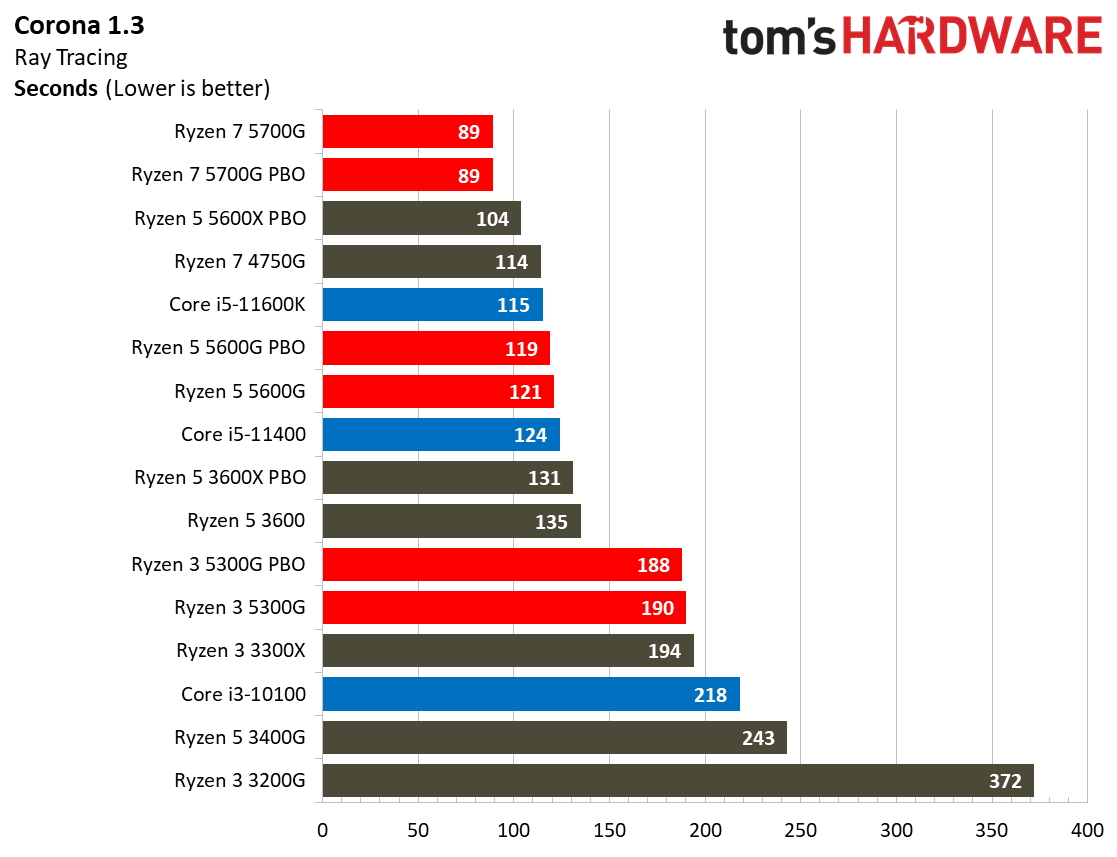
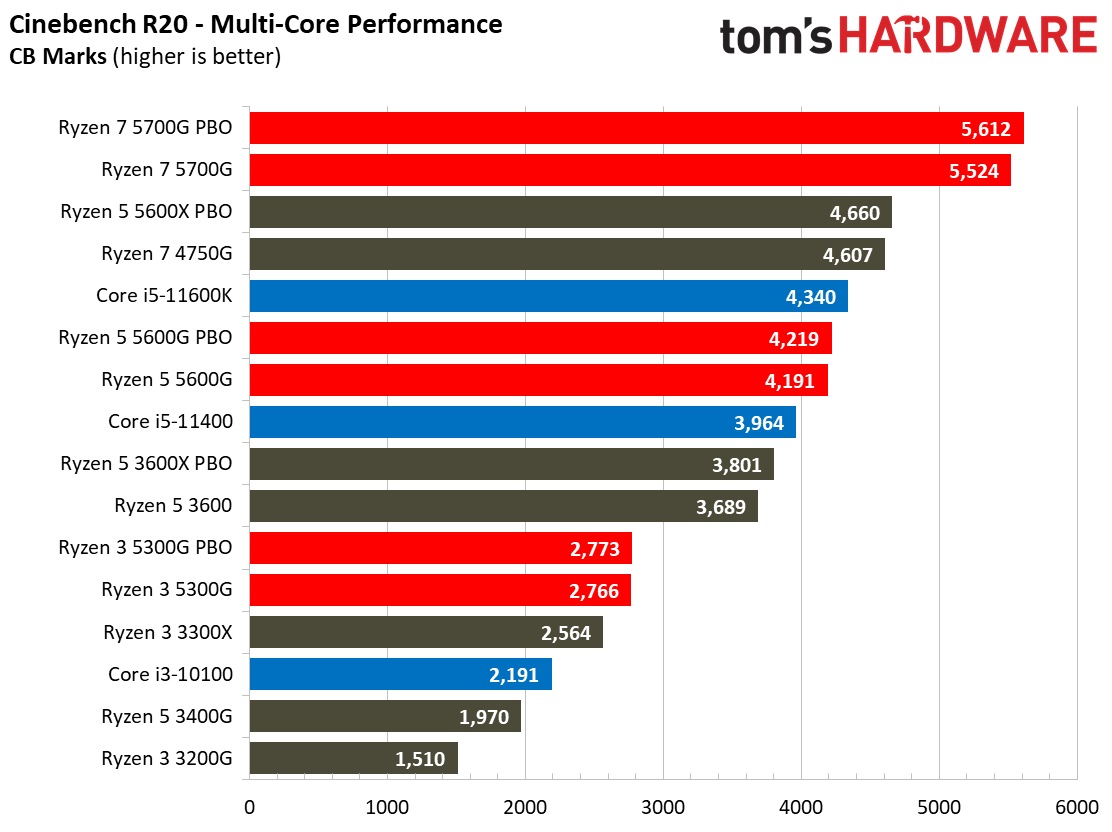
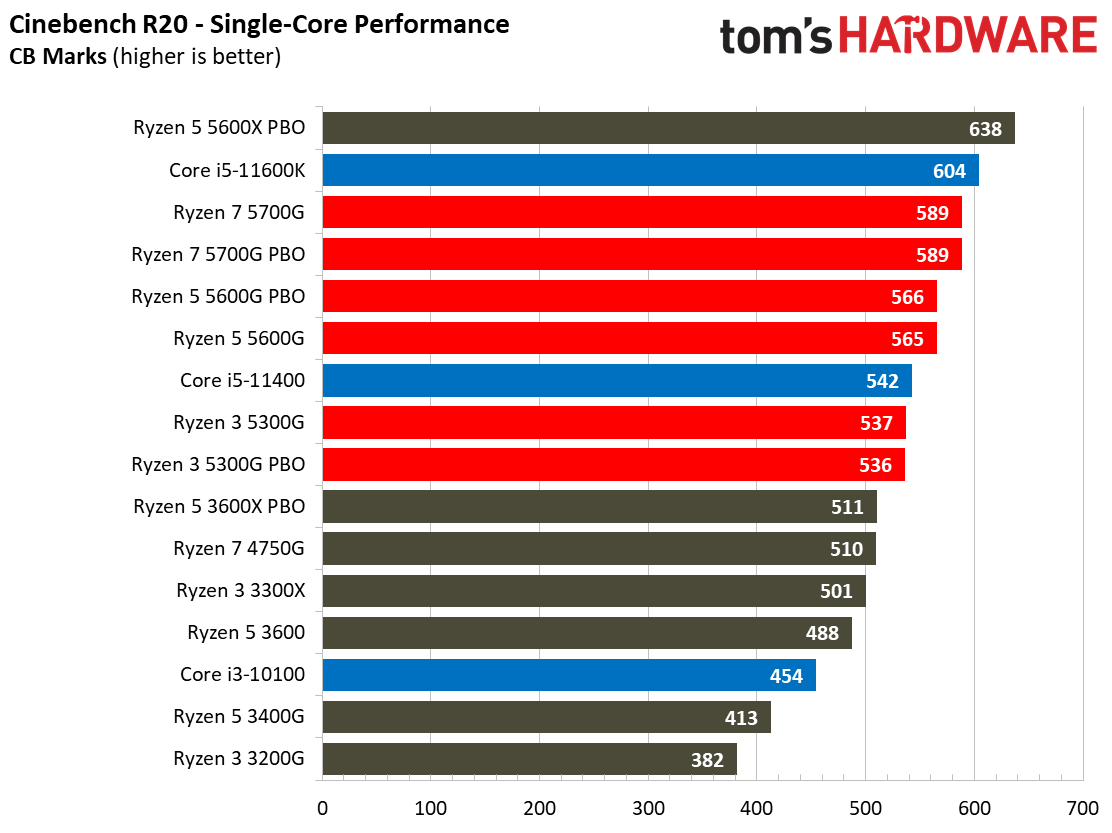
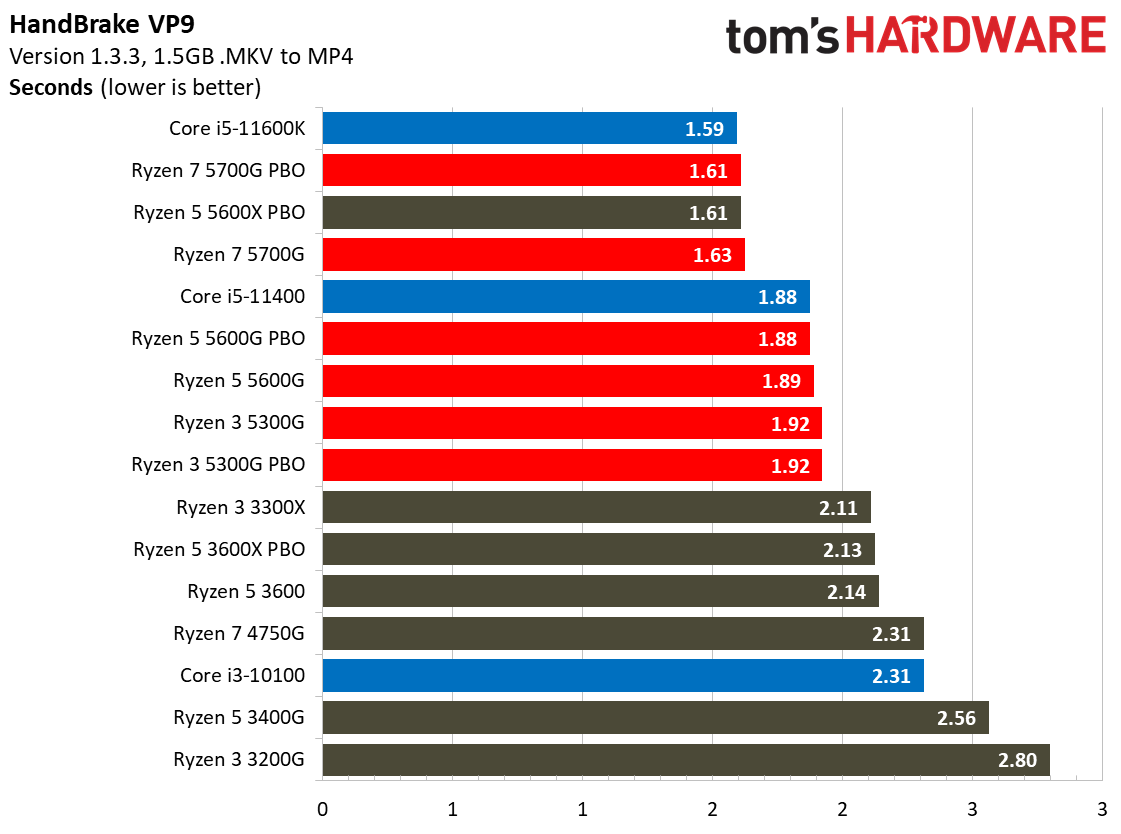
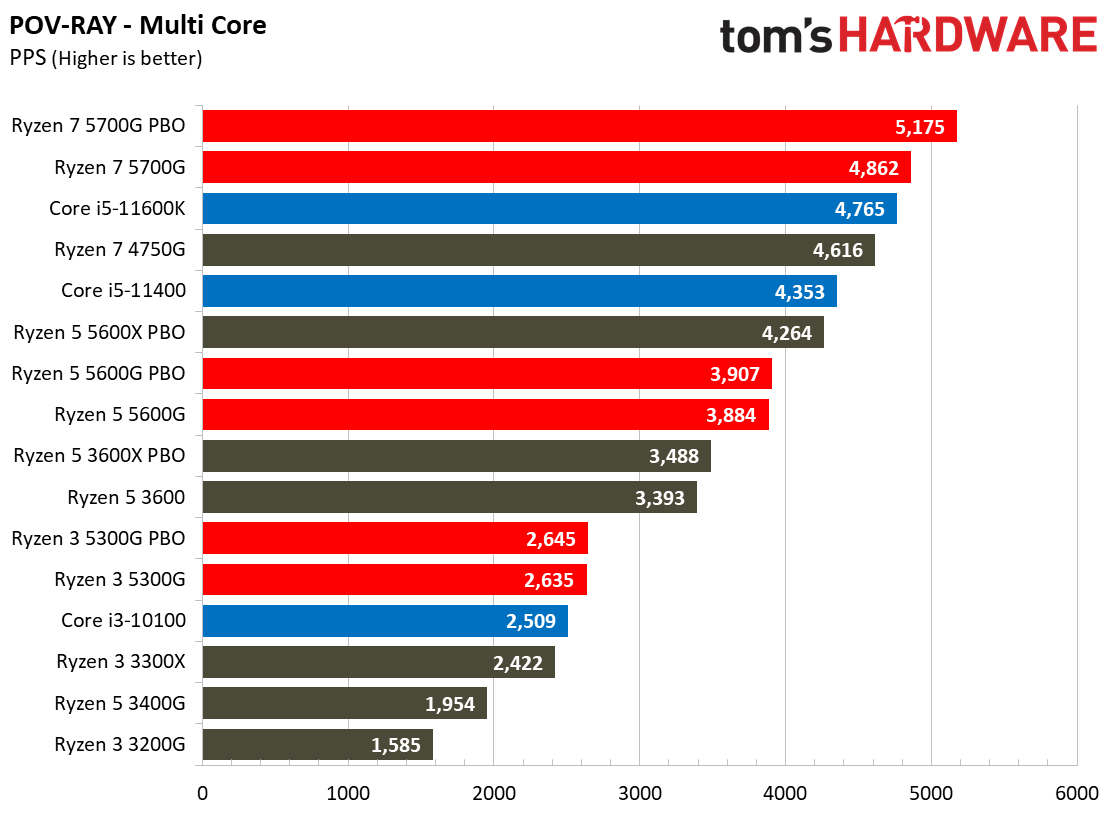
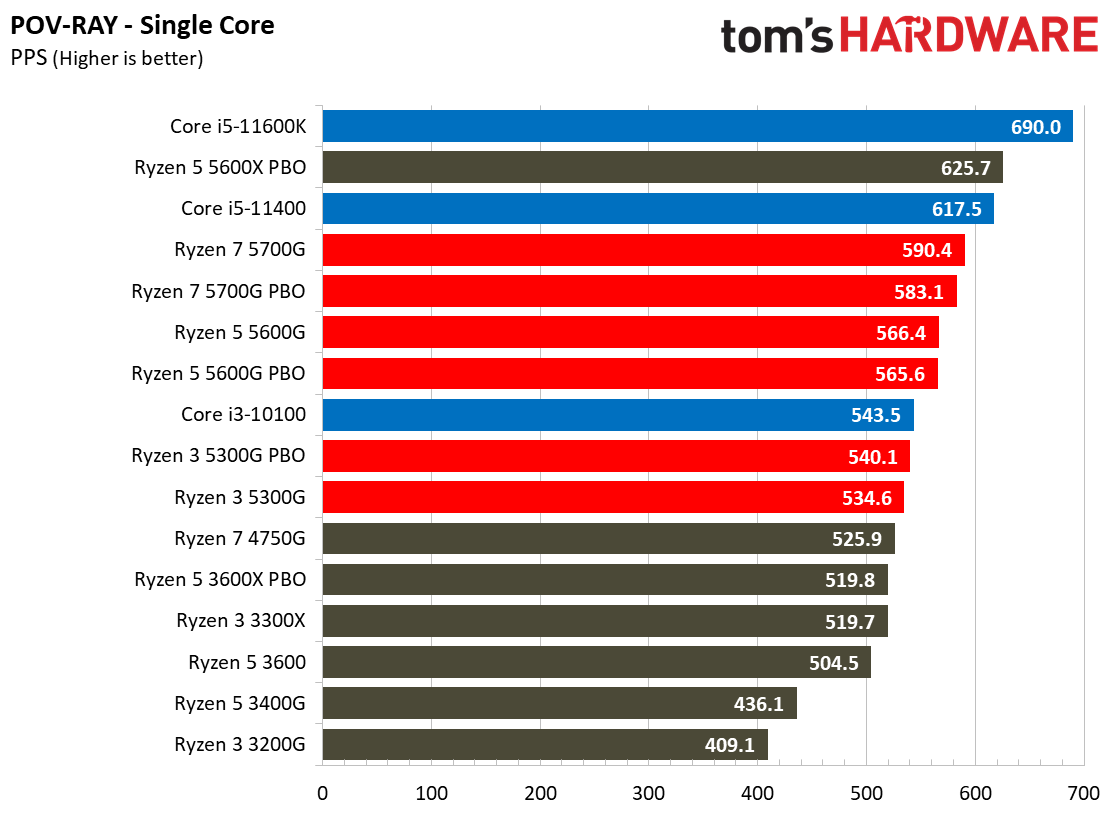
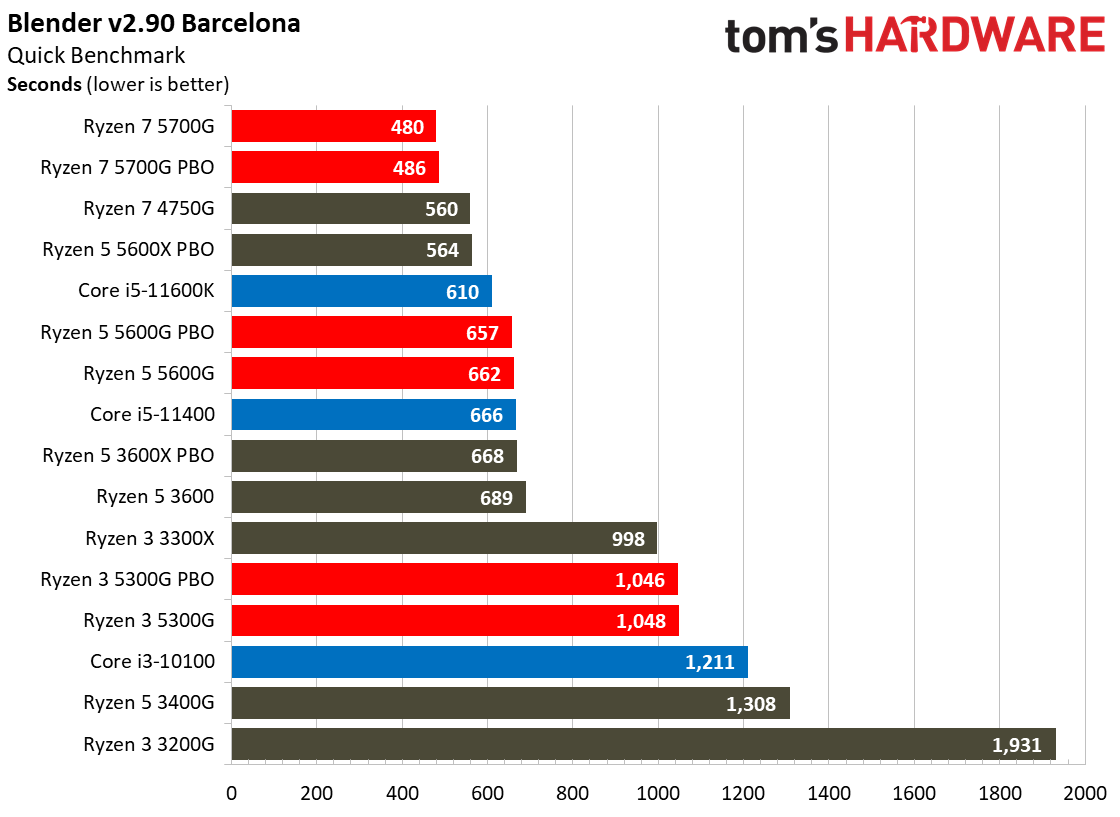
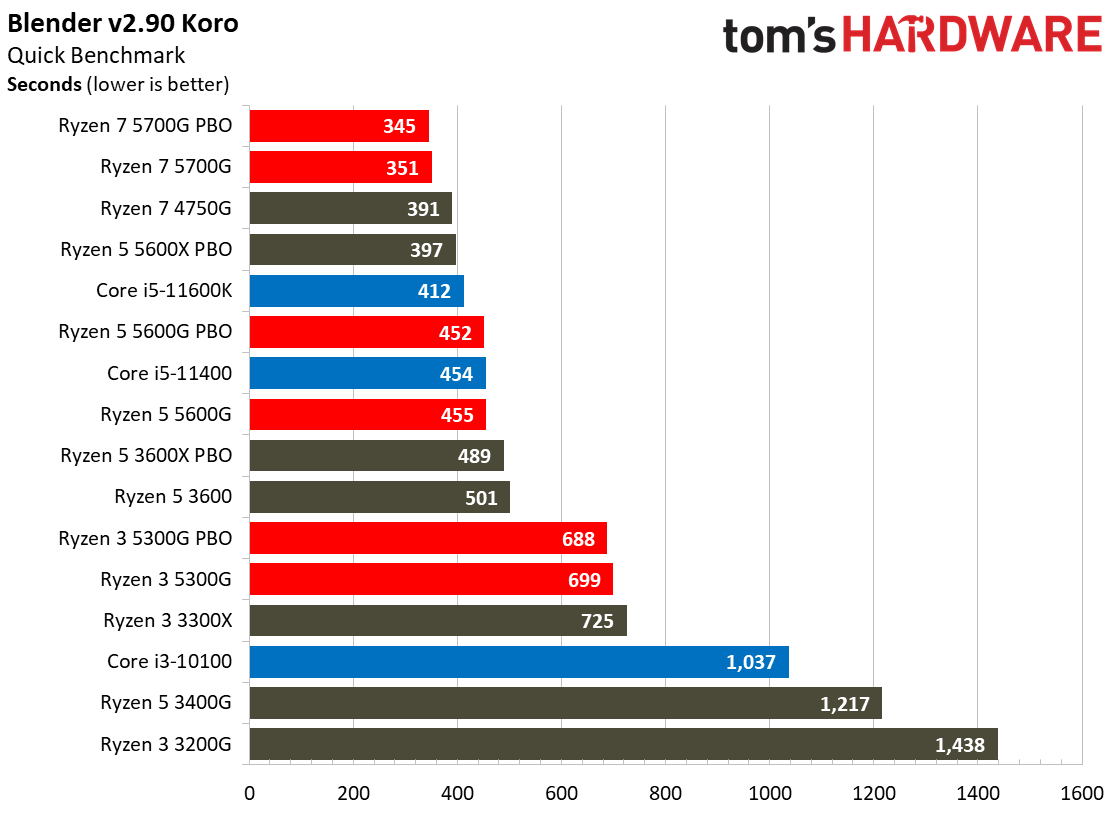
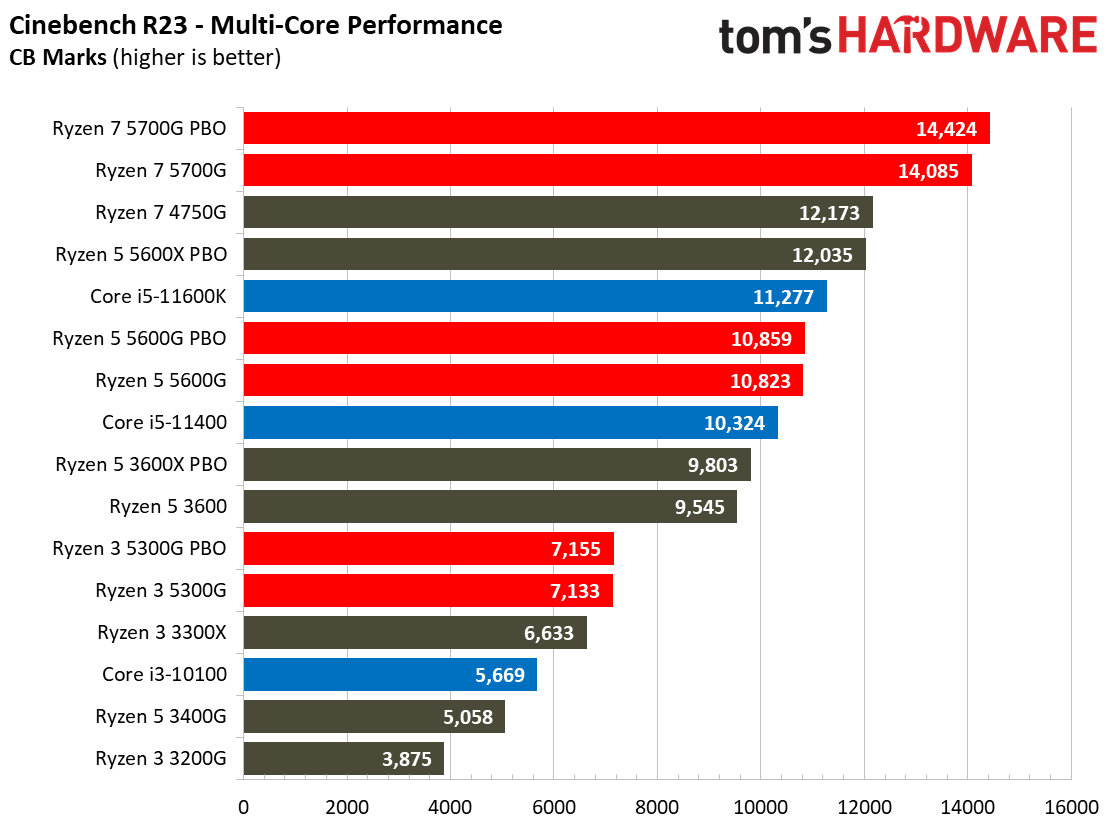
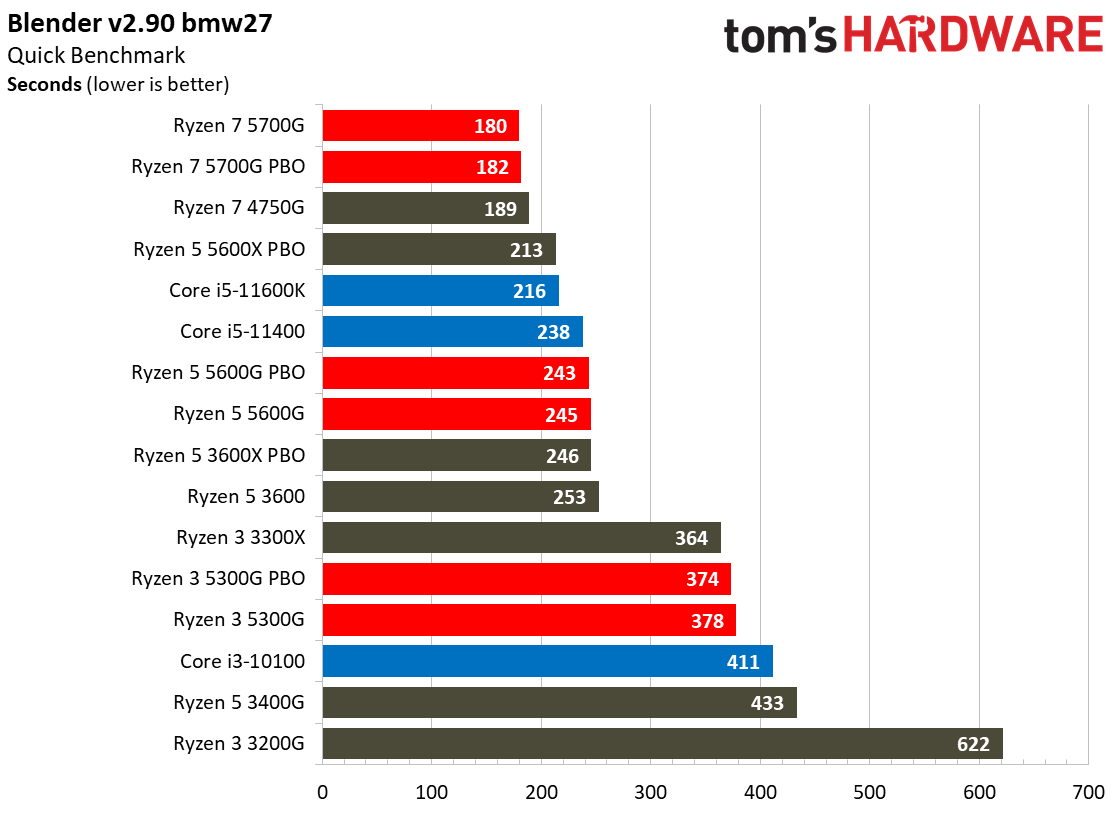
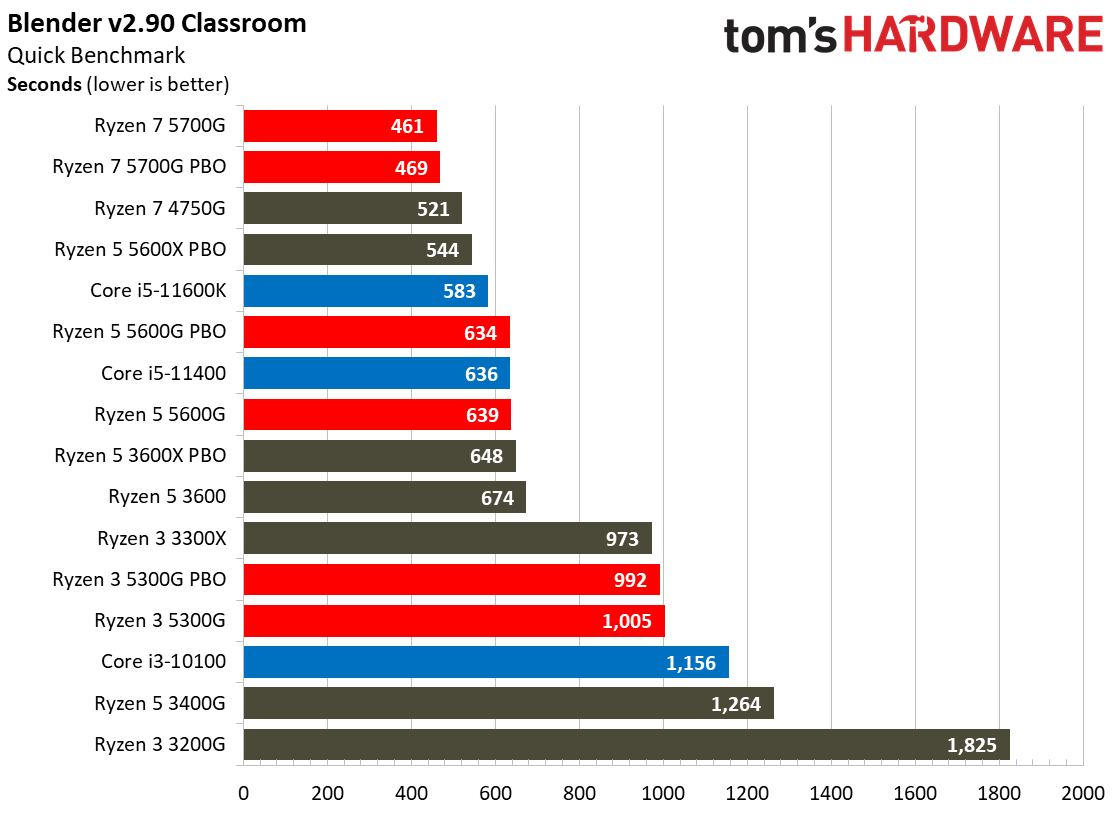
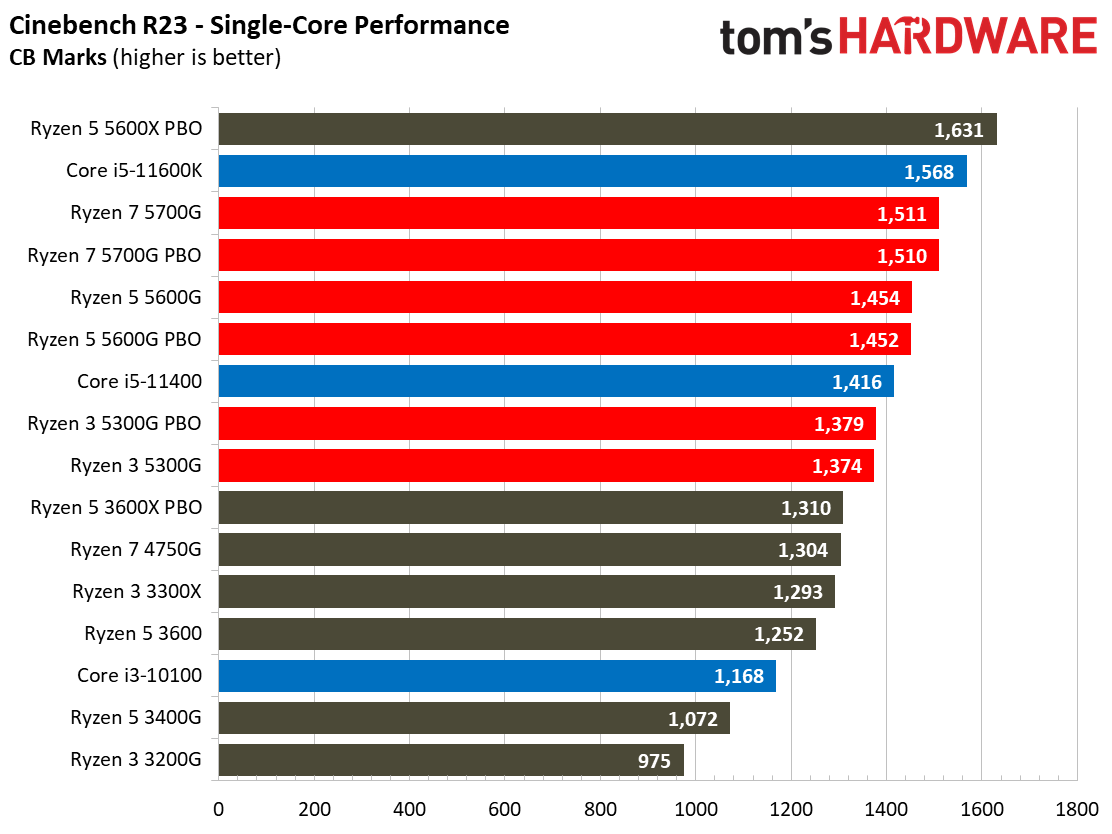
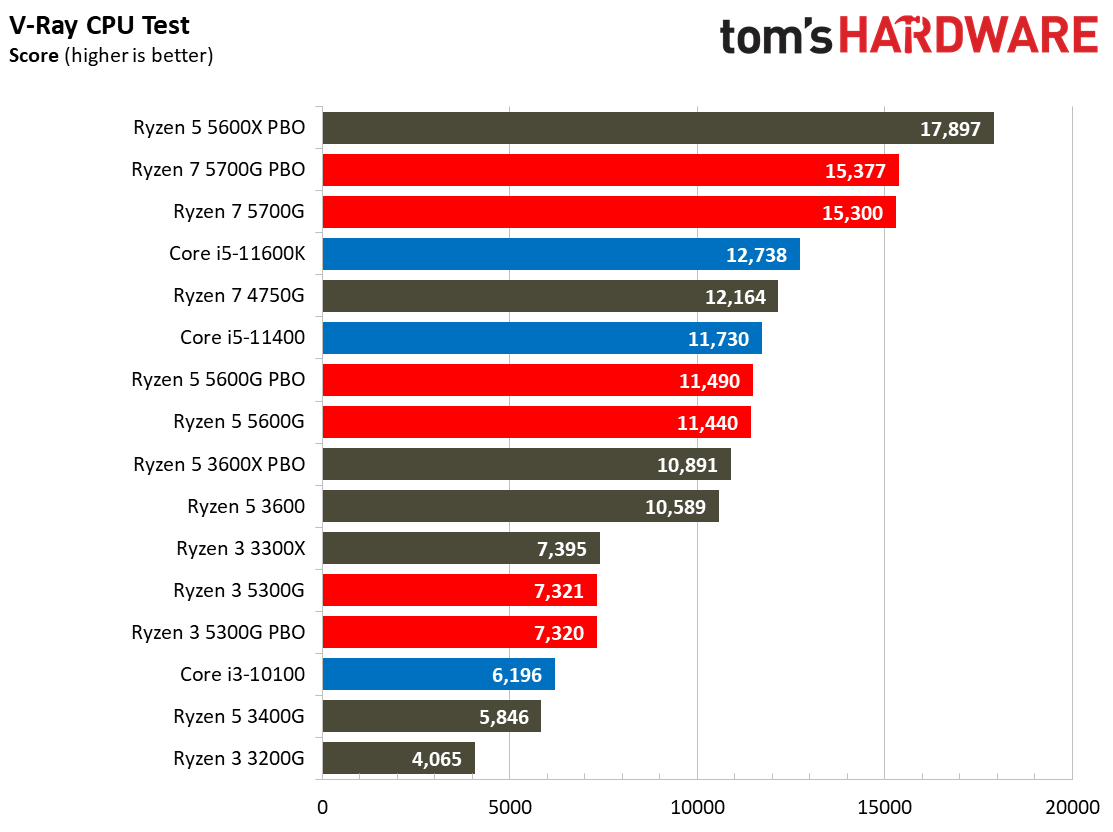
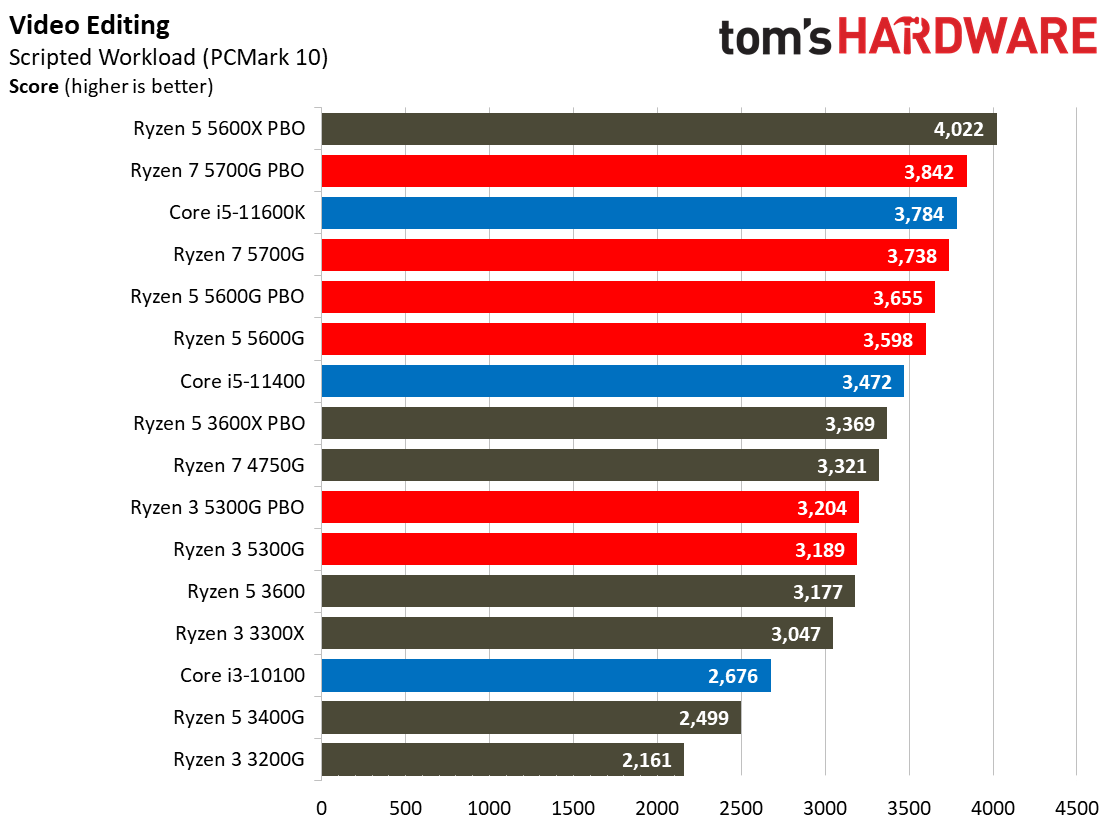
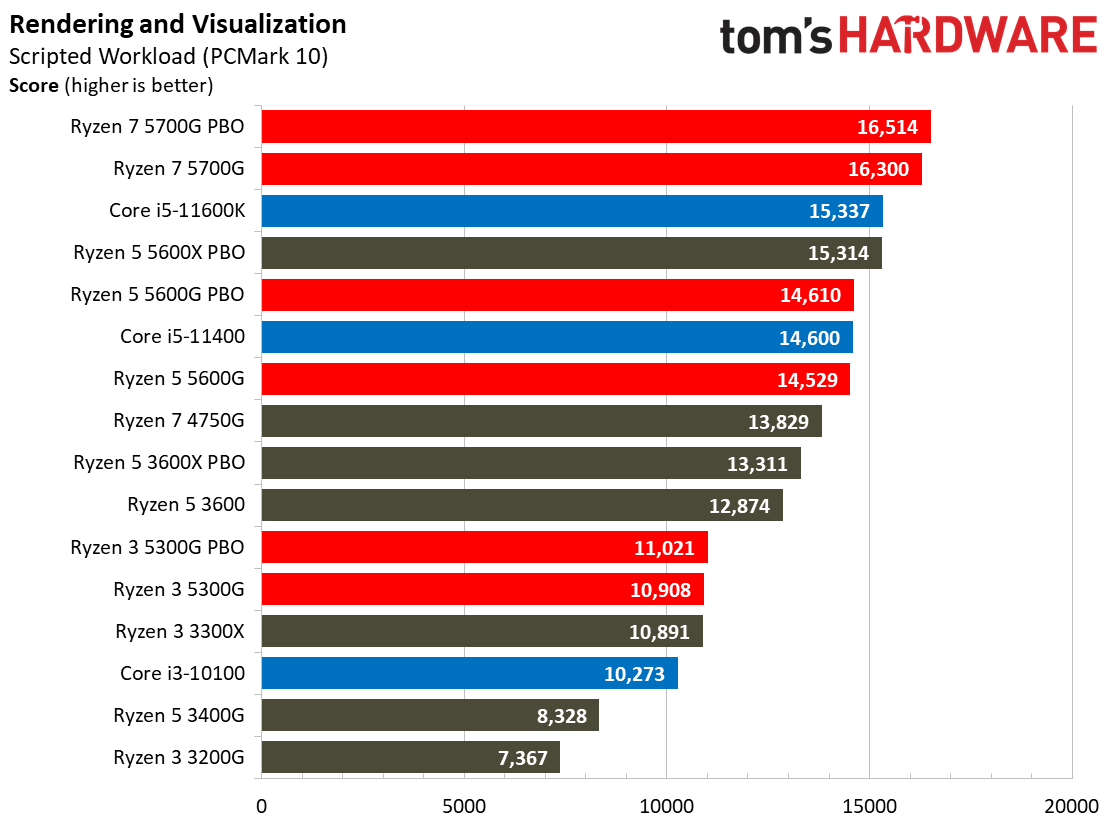
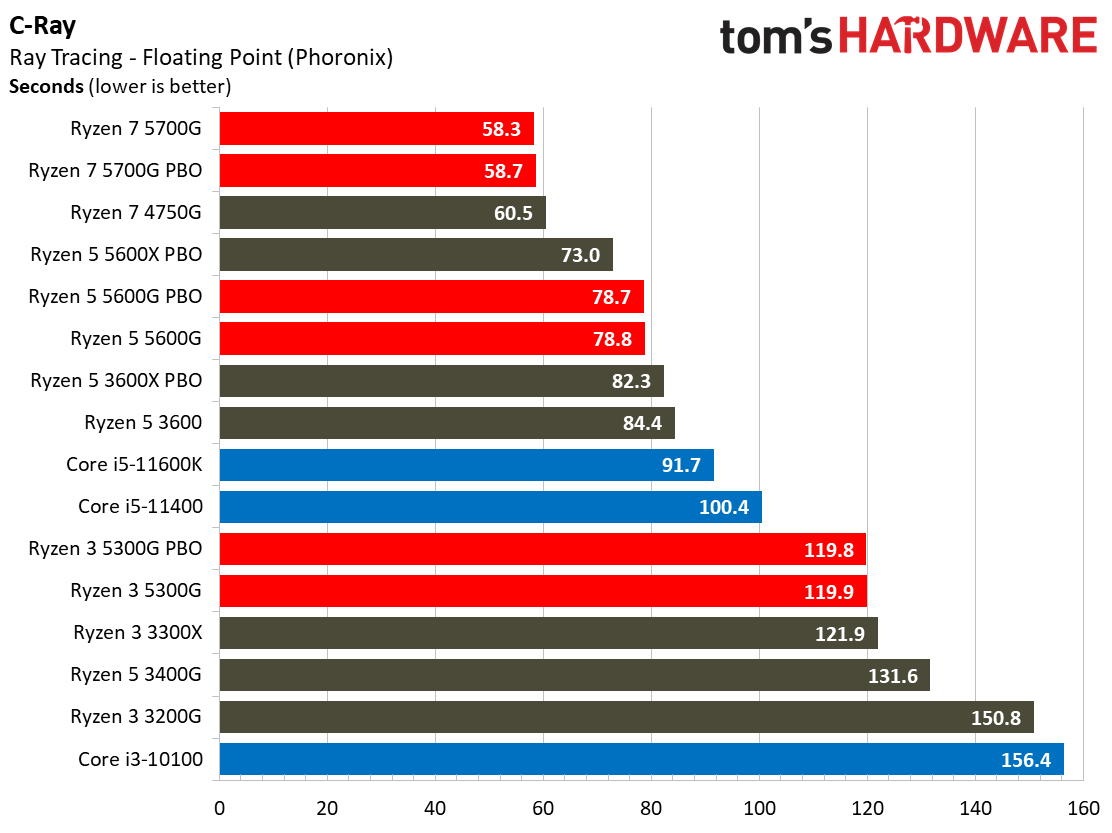
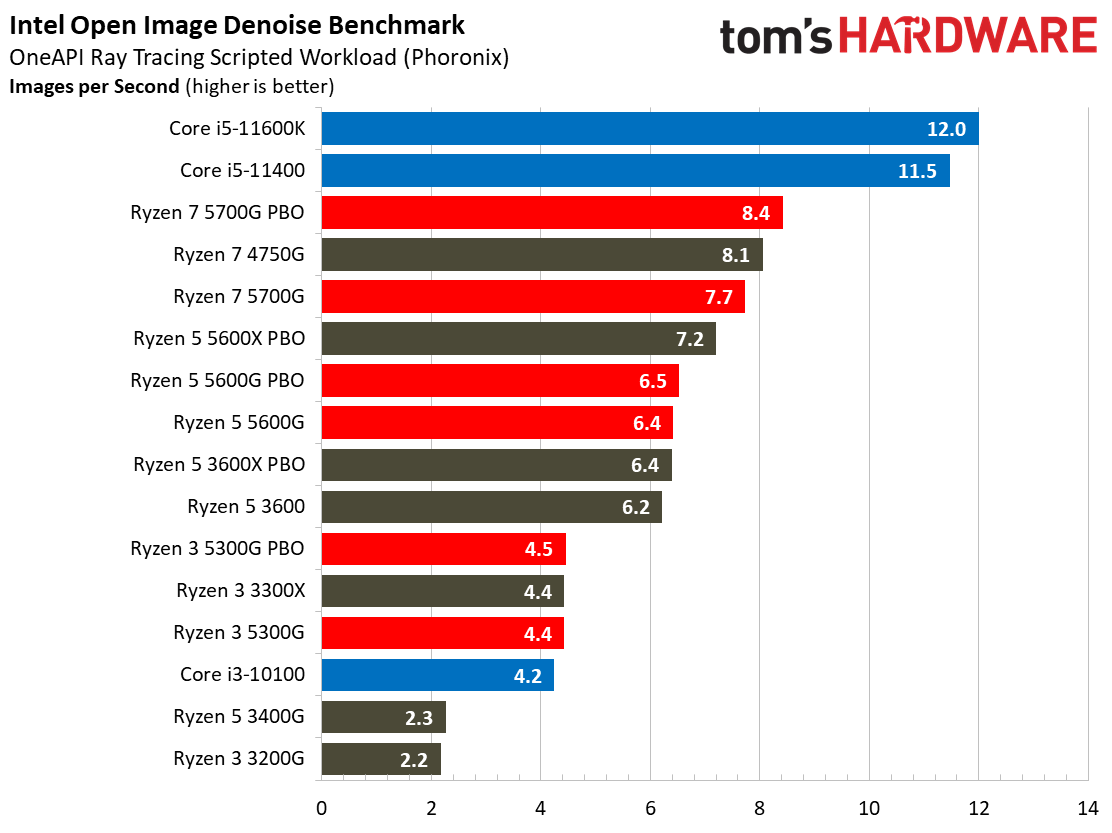
Remember, the previous-gen Ryzen 5 3400G slots into the same general price range that we would expect for the Ryzen 3 5300G, and it's the only comparable previous-gen APU at retail. The chip trails its more modern counterparts by massive margins in almost all of these threaded workloads, underlining that the Ryzen 3 5300G would be a big leap forward for enthusiasts, if only it were available at retail.
Encoding Benchmarks on AMD Ryzen 3 5300G

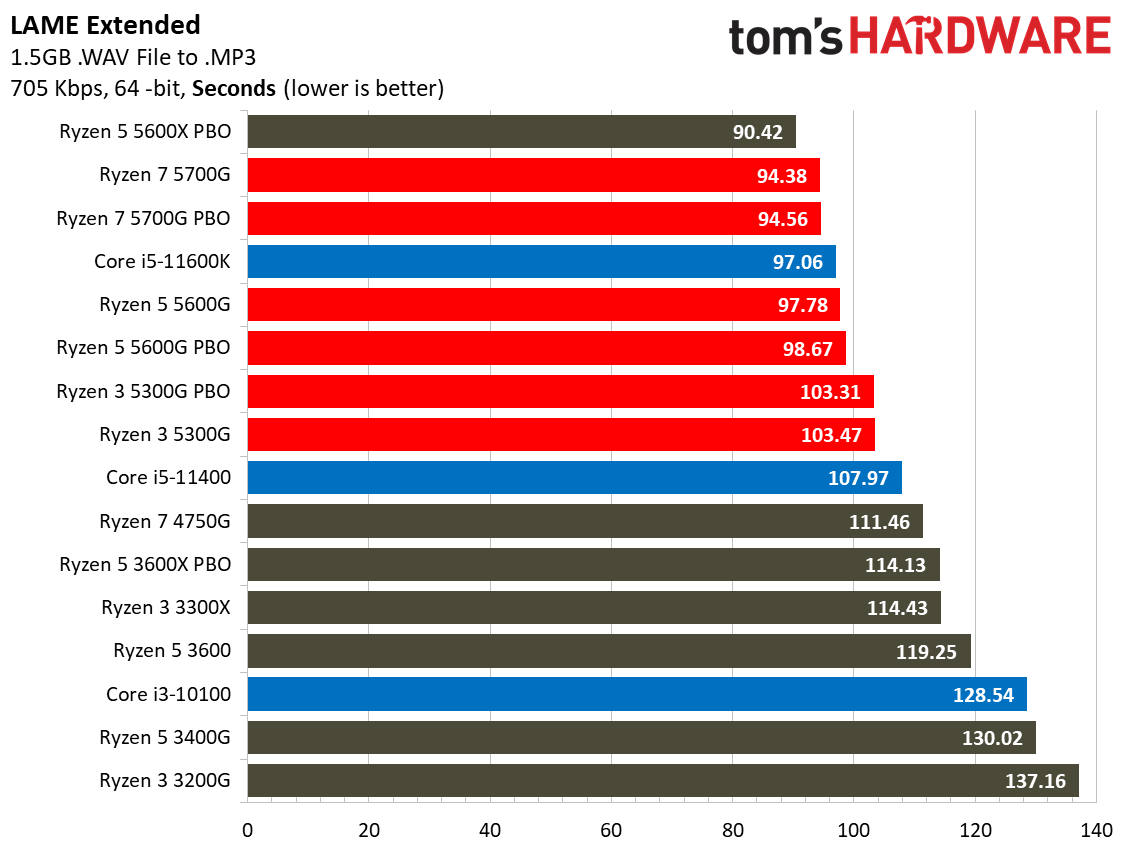
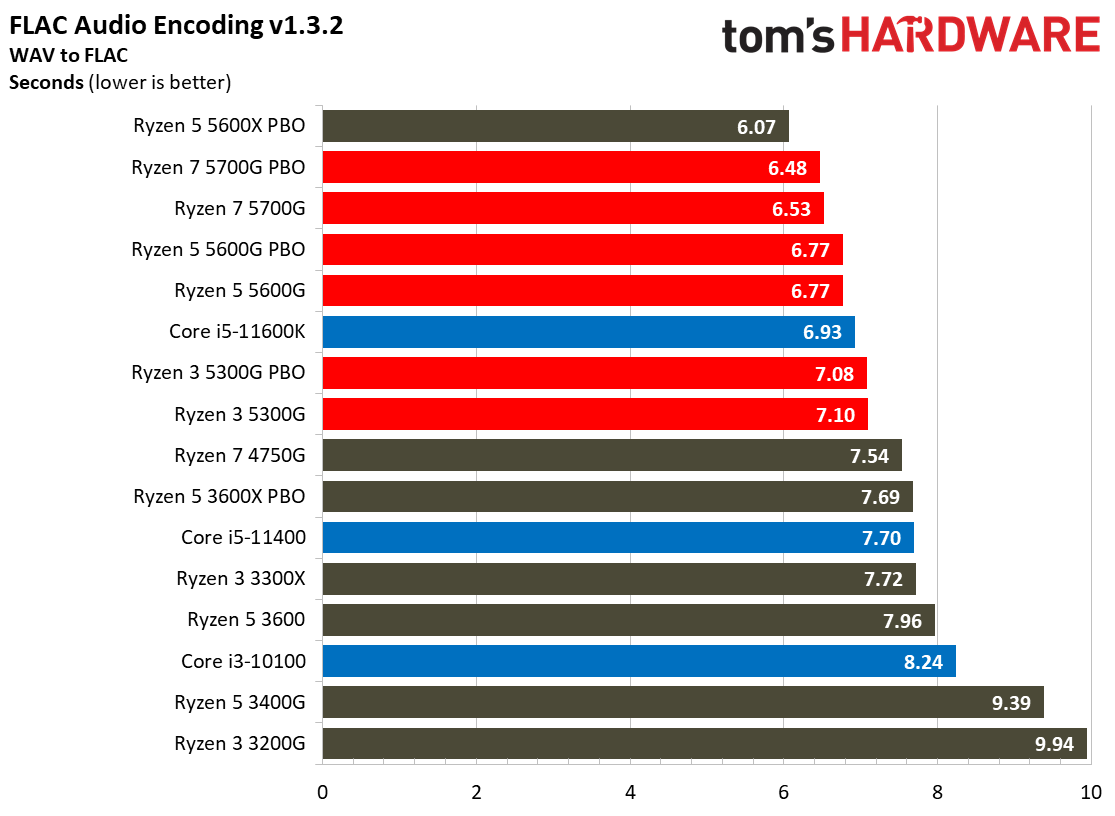

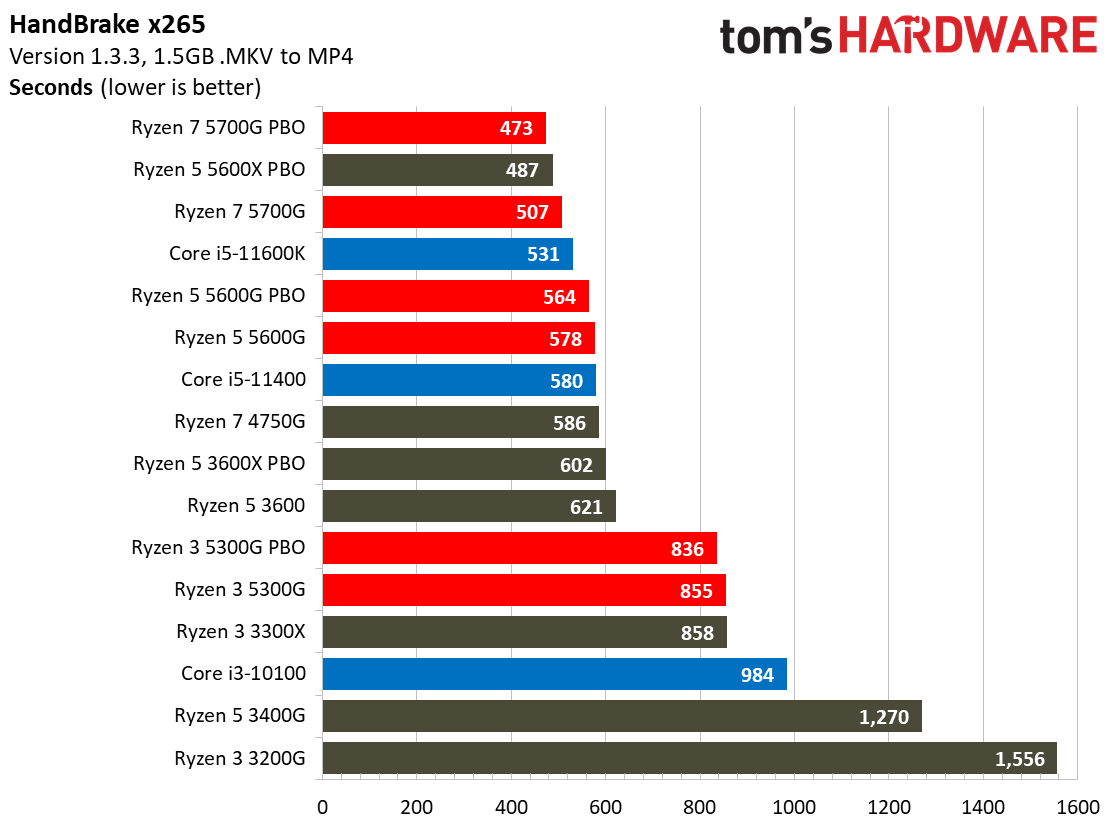

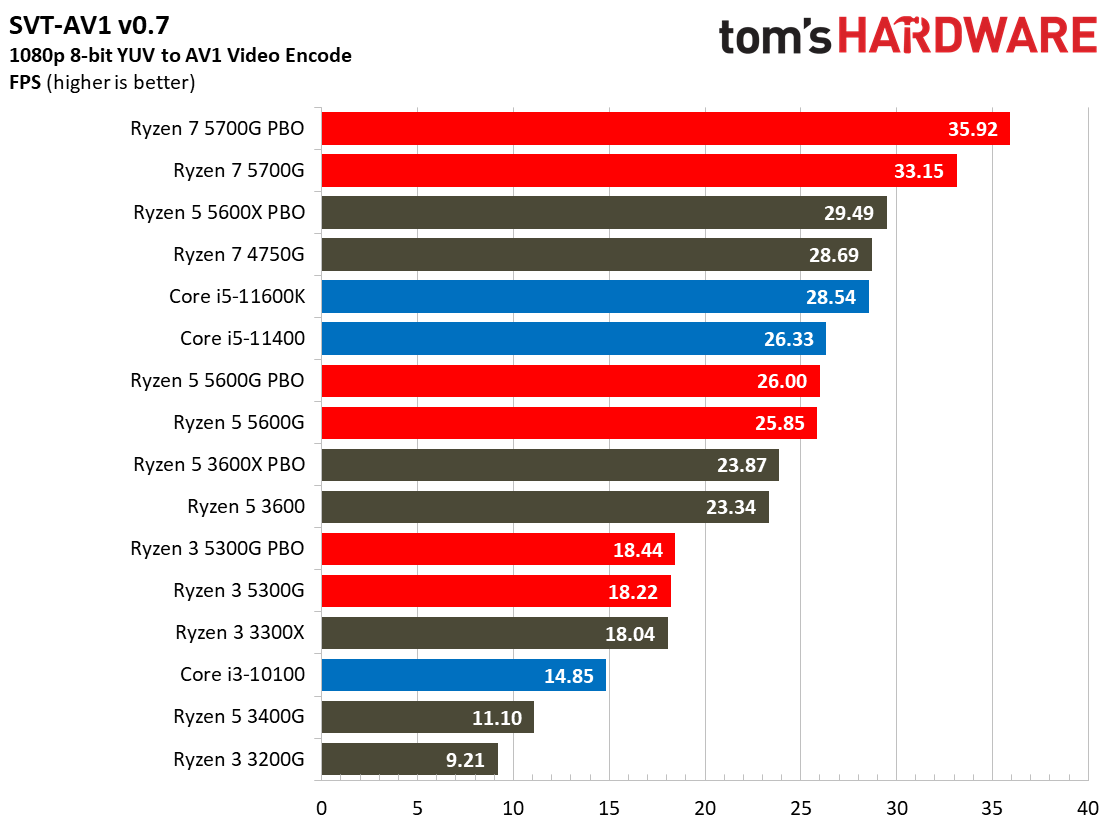
Our encoding tests include benchmarks that respond best to single-threaded performance, like the quintessential LAME and FLAC examples, but the SVT-AV1 and SVT-HEVC tests represent a newer class of threaded encoders. The Ryzen 3 5300G does surprisingly well with LAME and FLAC as it outpaces the Core i5-11400, but the Intel chip flips the table in the AVX-heavy HandBrake tests.
Get Tom's Hardware's best news and in-depth reviews, straight to your inbox.
Web Browser, Office and Productivity on AMD Ryzen 3 5300G

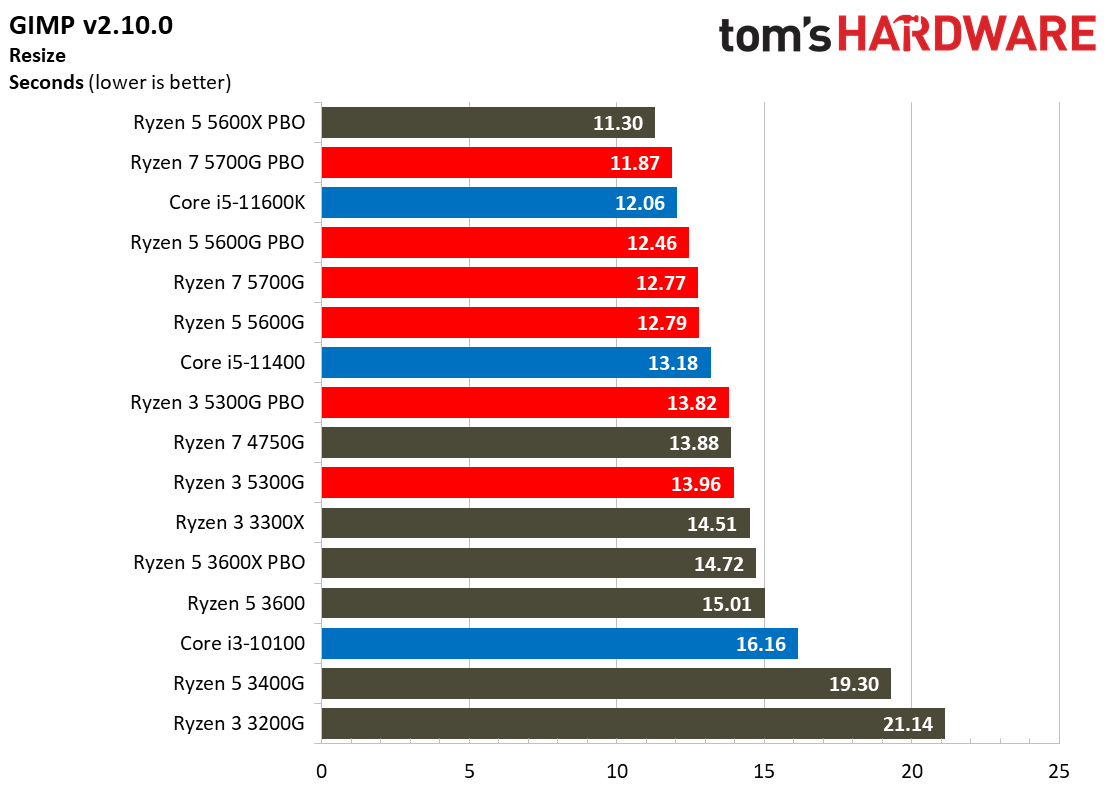

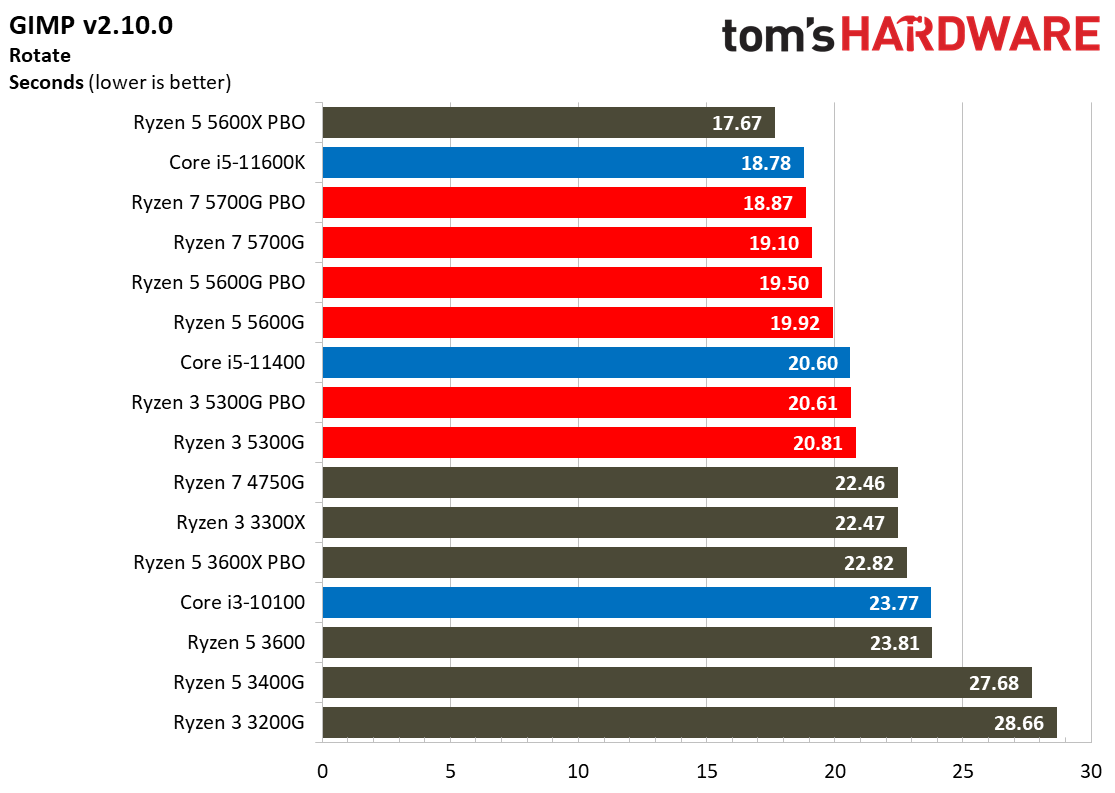
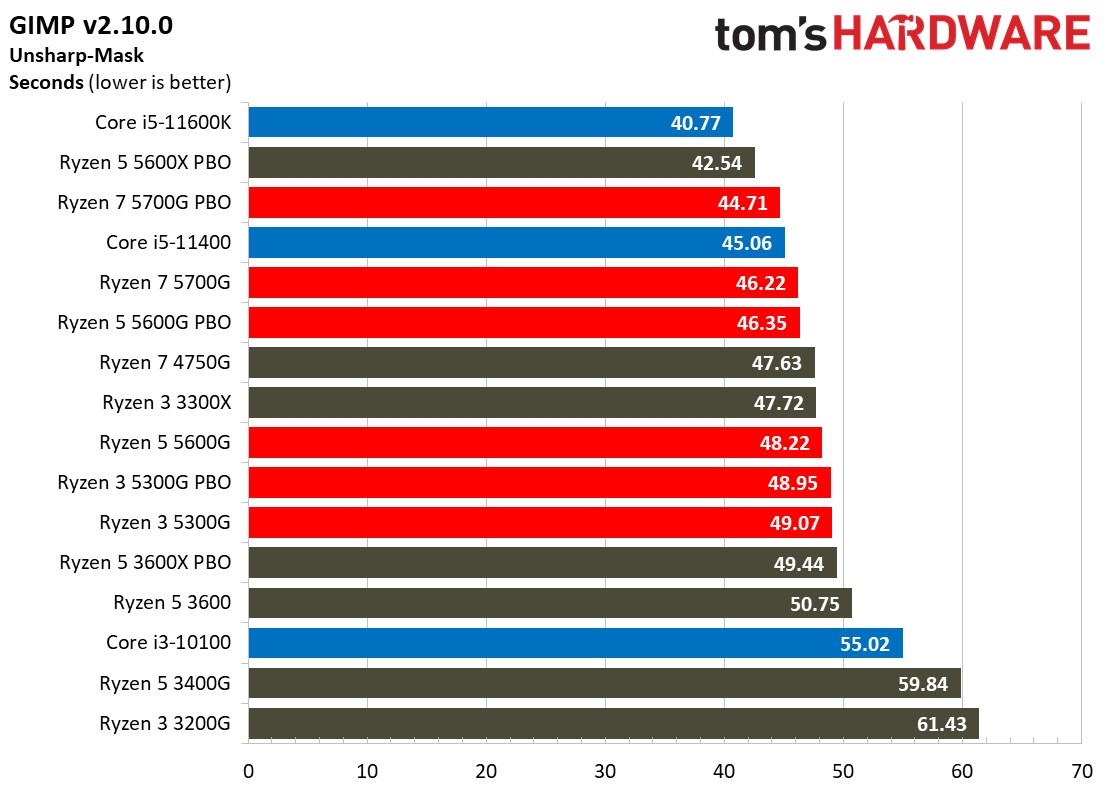
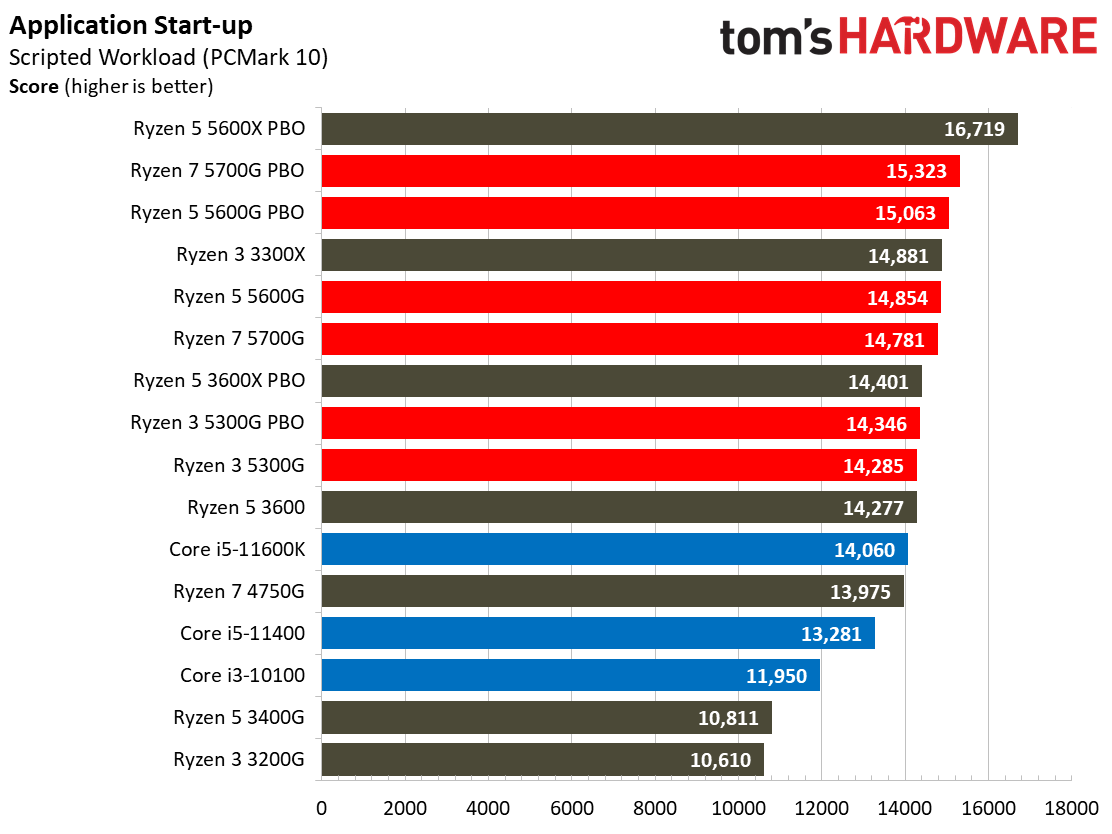
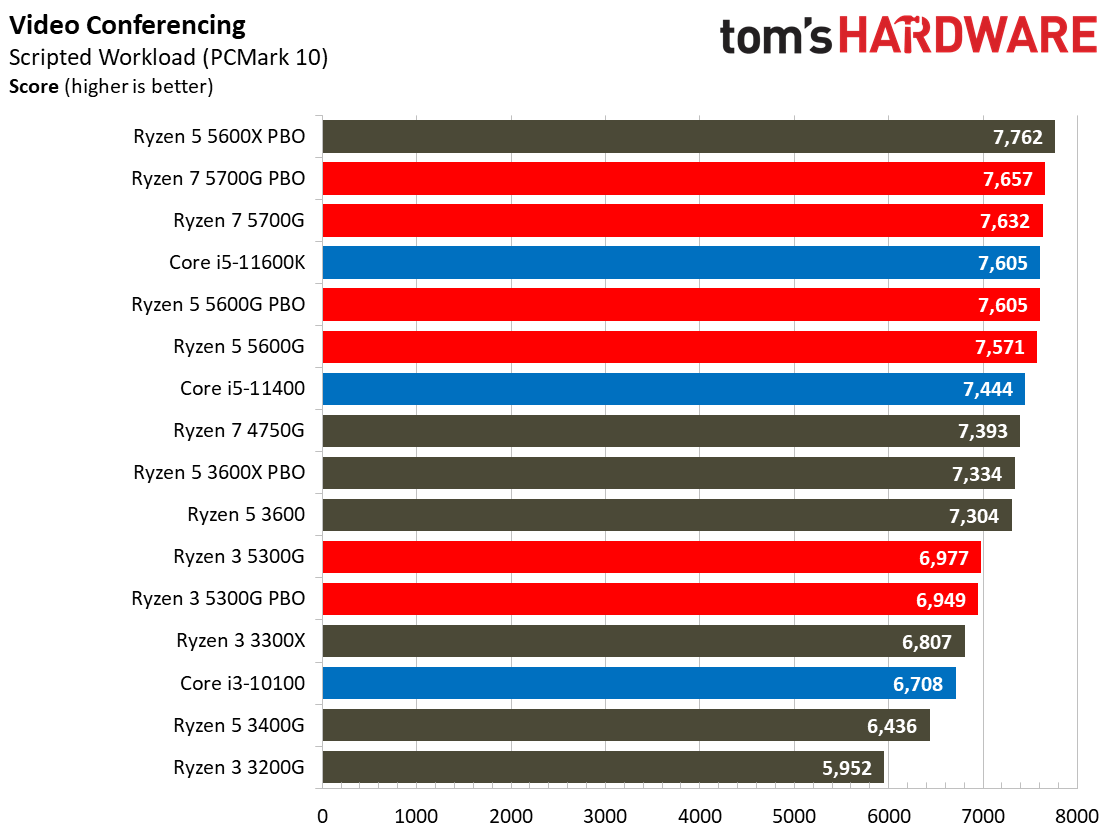

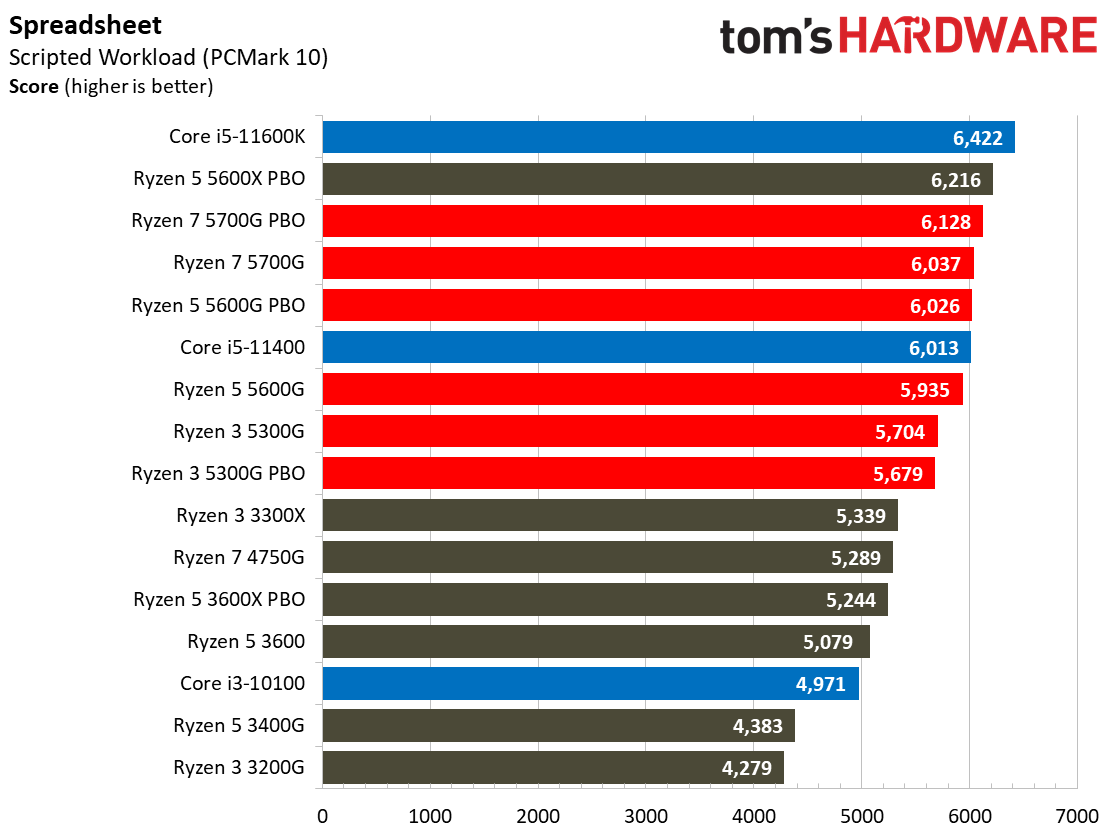

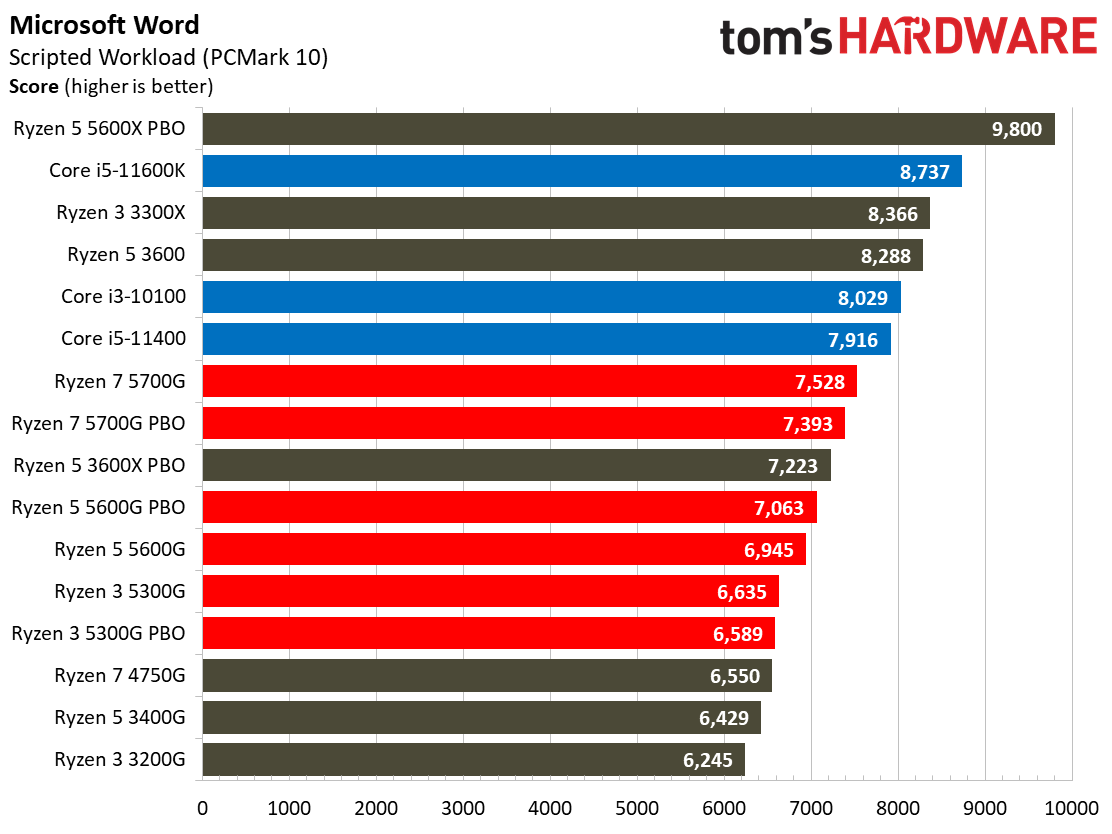
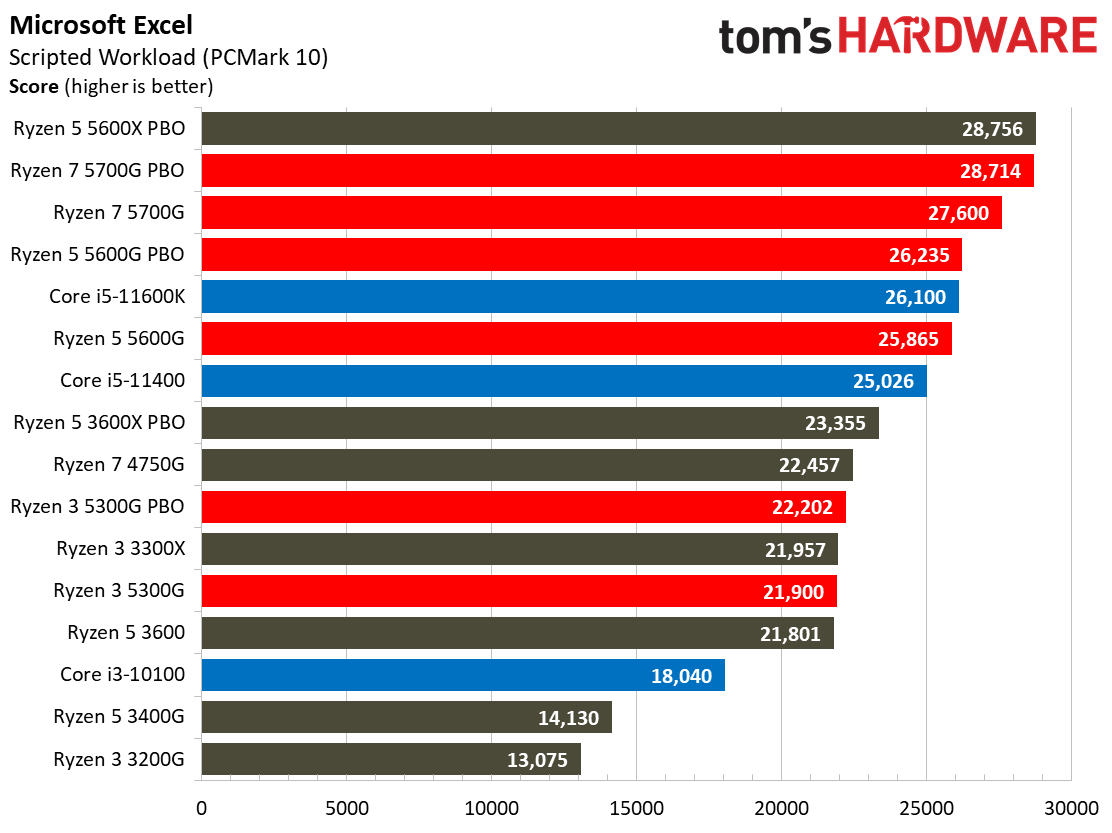
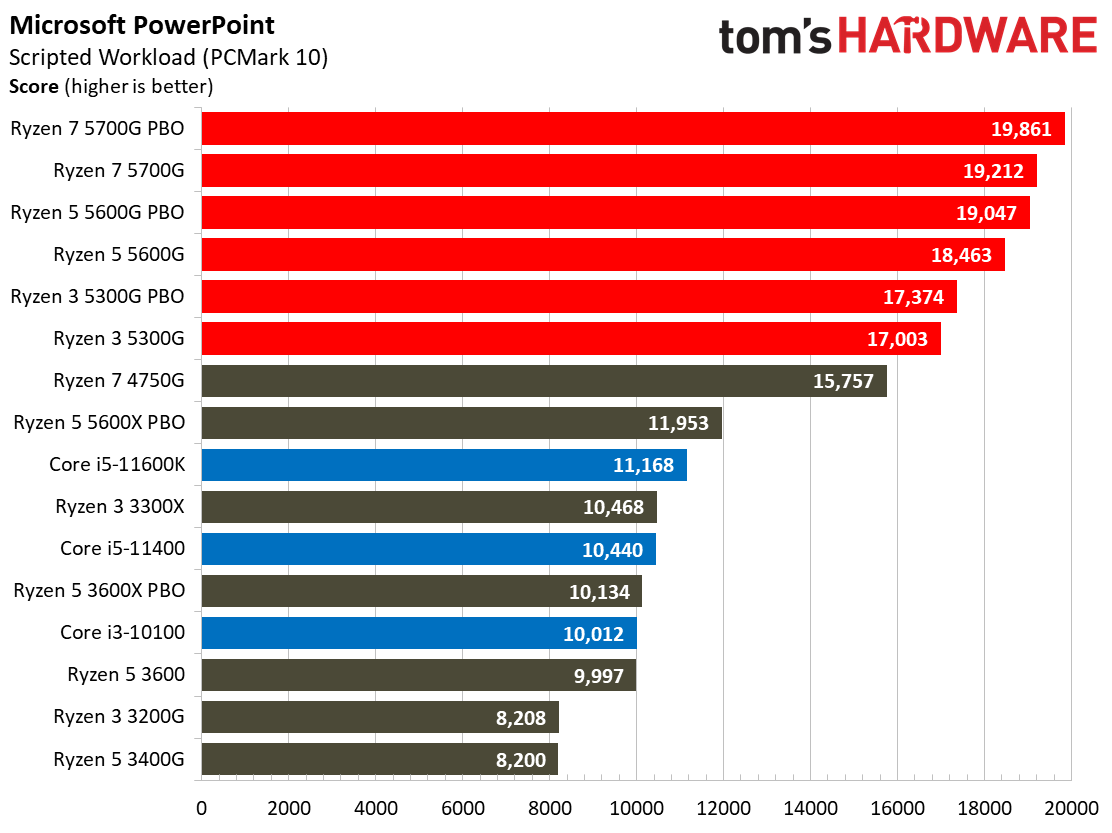
Yet another Chrome update has broken out automated web browser benchmarks, but we'll fix that when we move to Windows 11 when the Alder Lake processors arrive. That leaves us with PC Mark 10's built-in Edge test to quantify performance, but be aware that this test responds more to threading than any other type of web browser benchmark.
Compilation, Compression, AVX Performance on AMD Ryzen 3 5300G
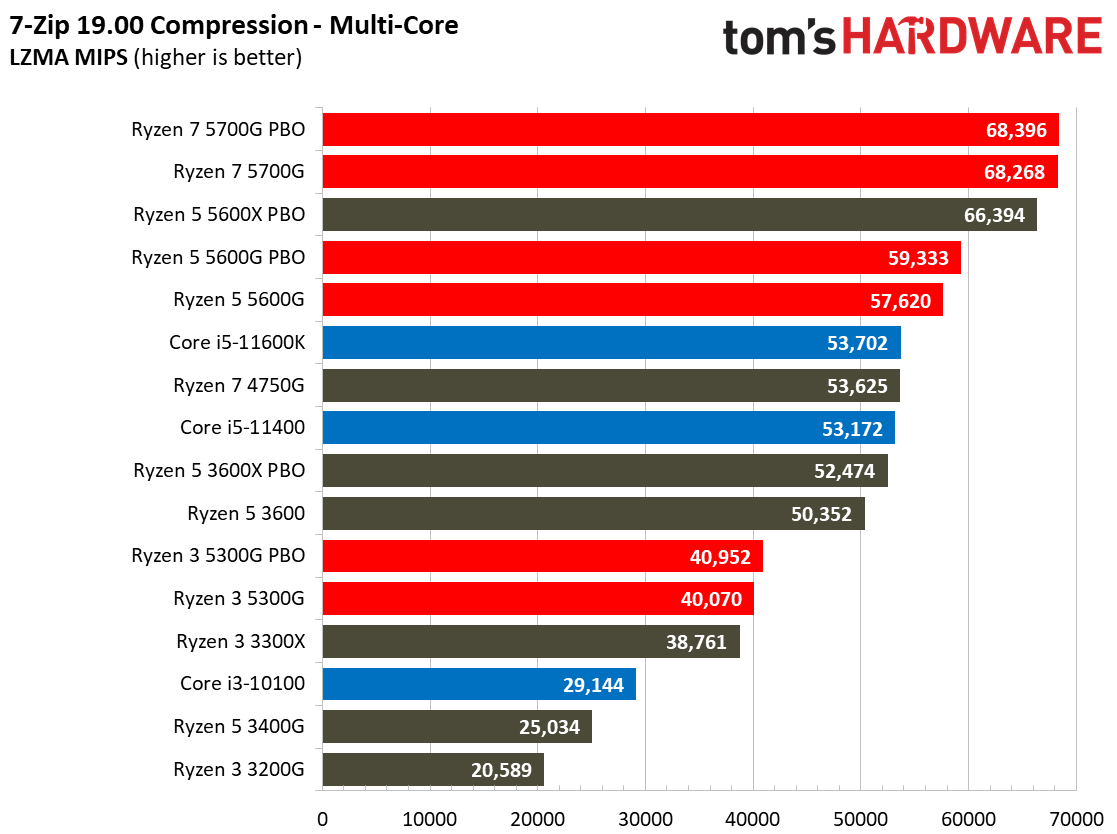

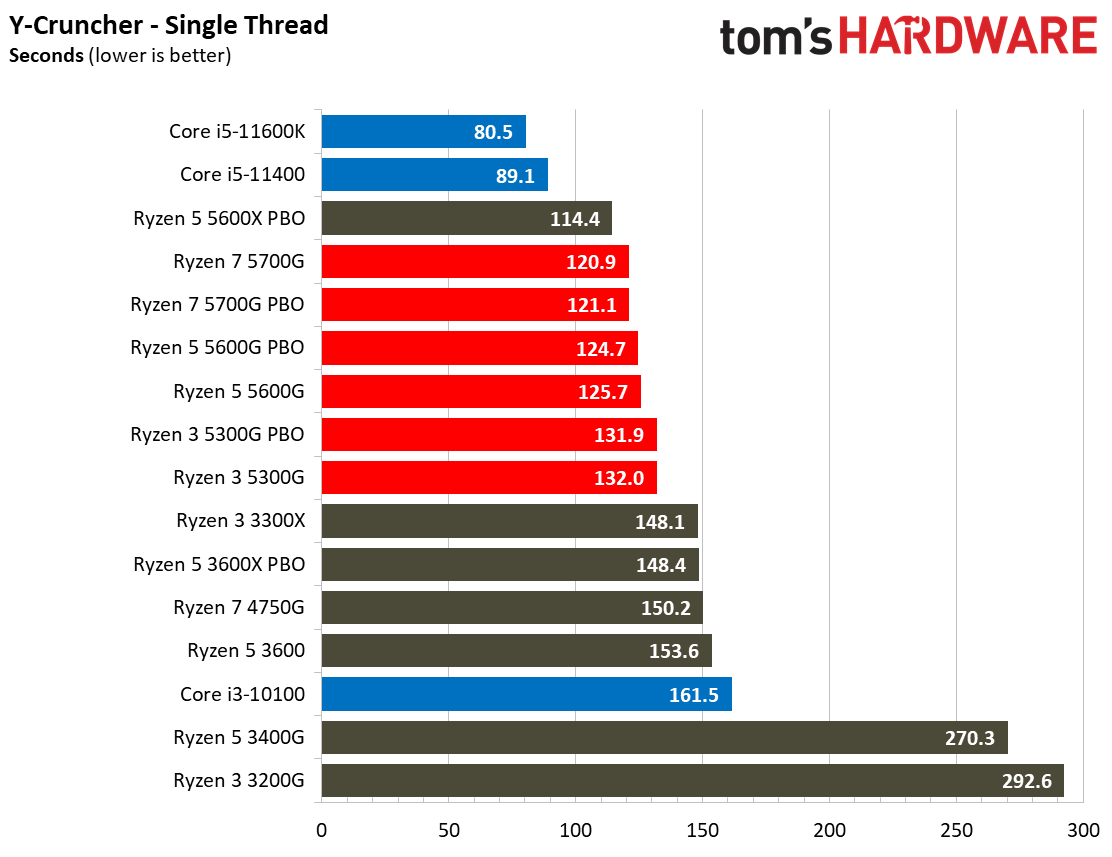
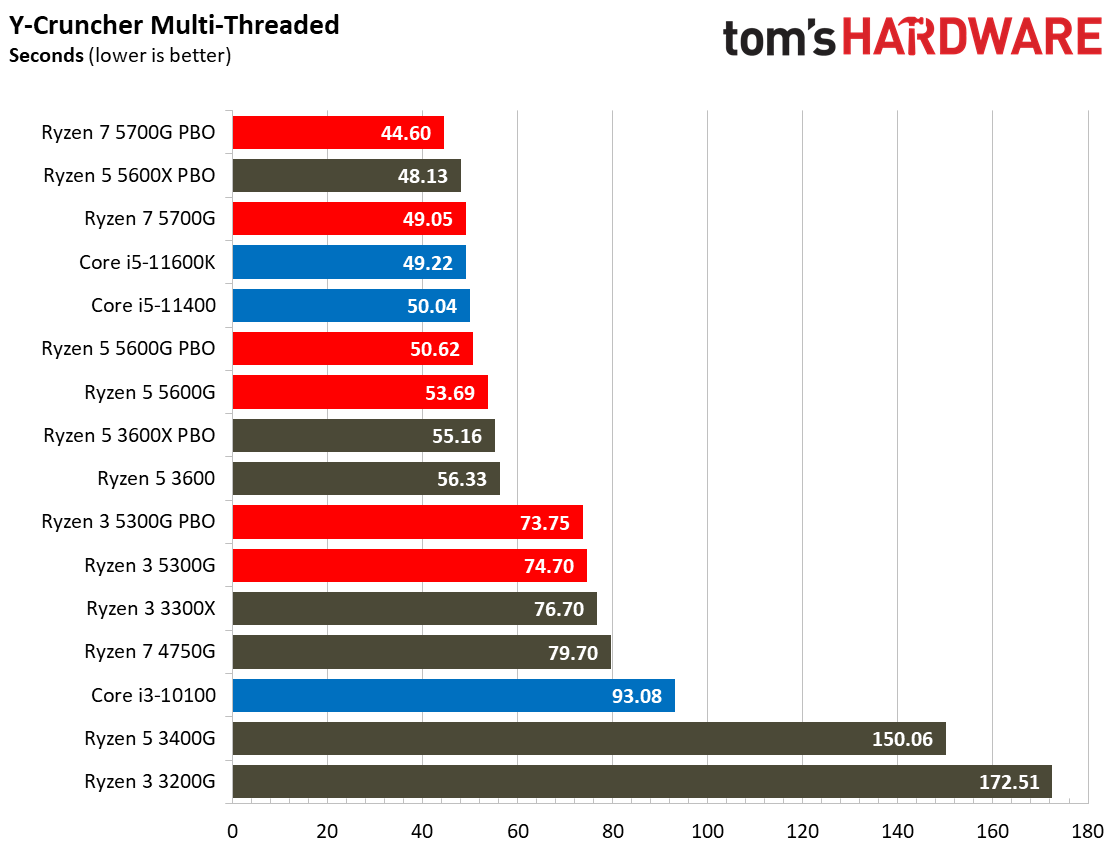
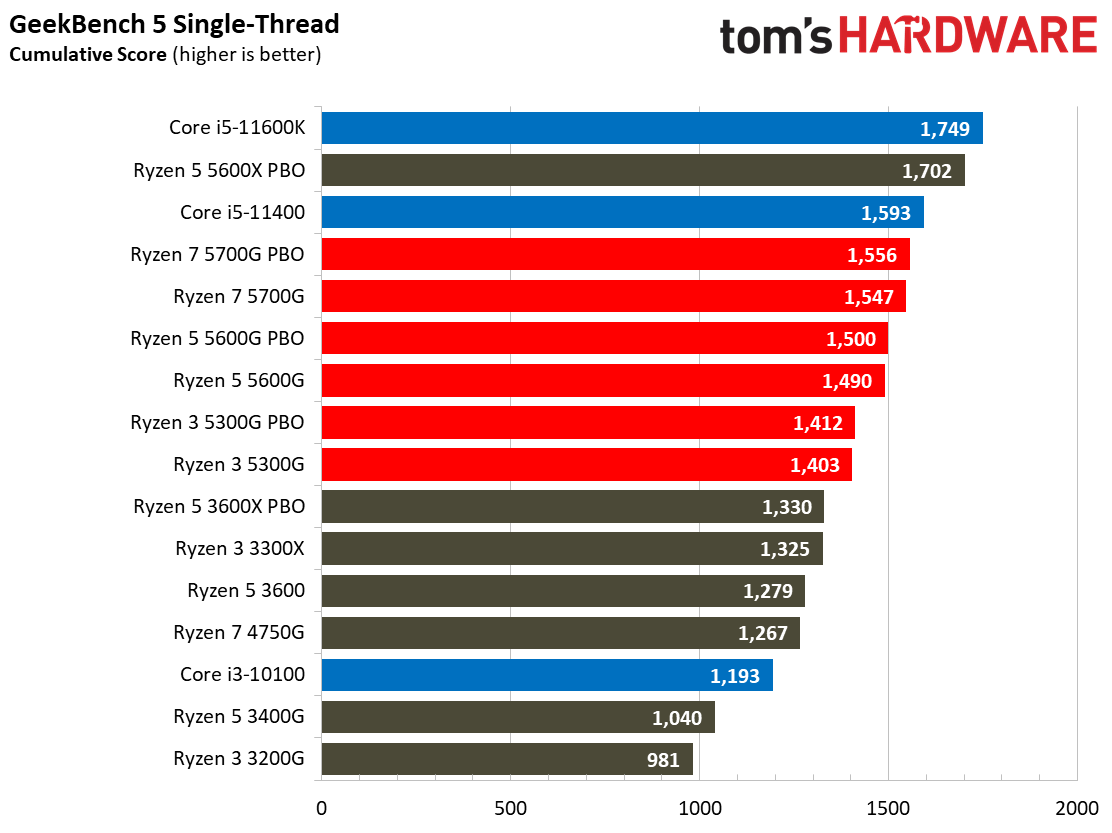


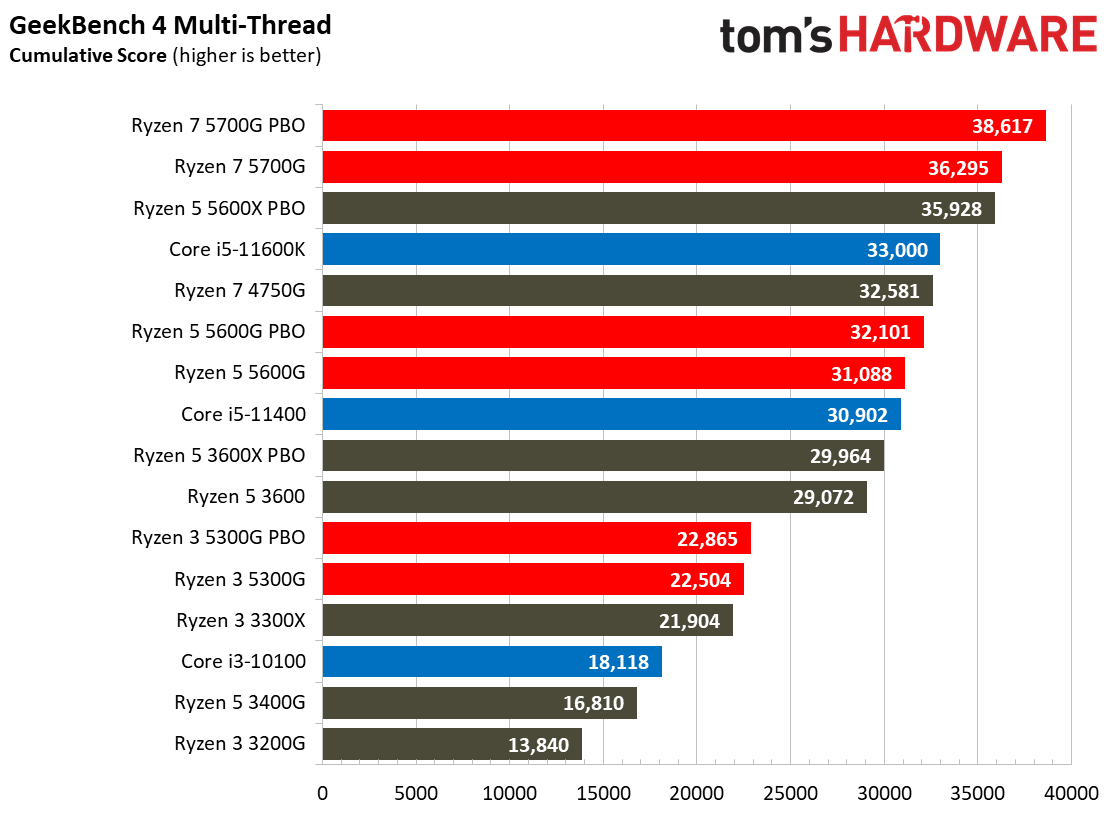
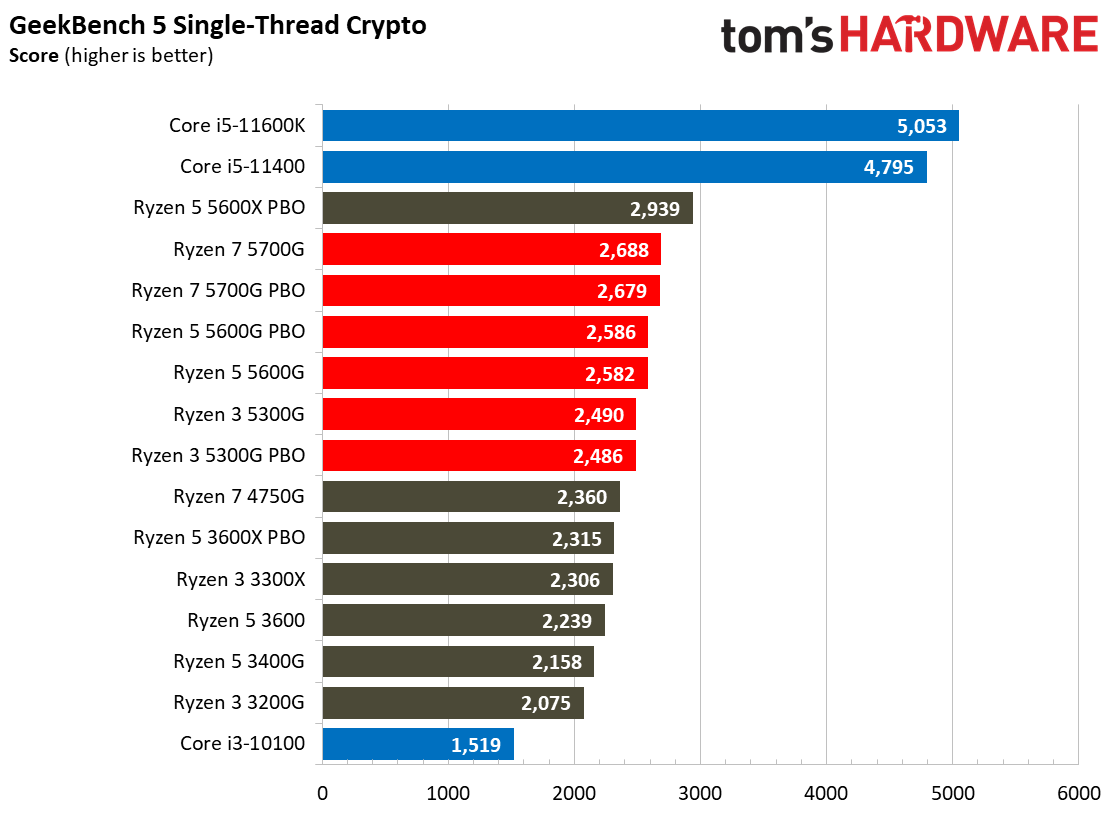
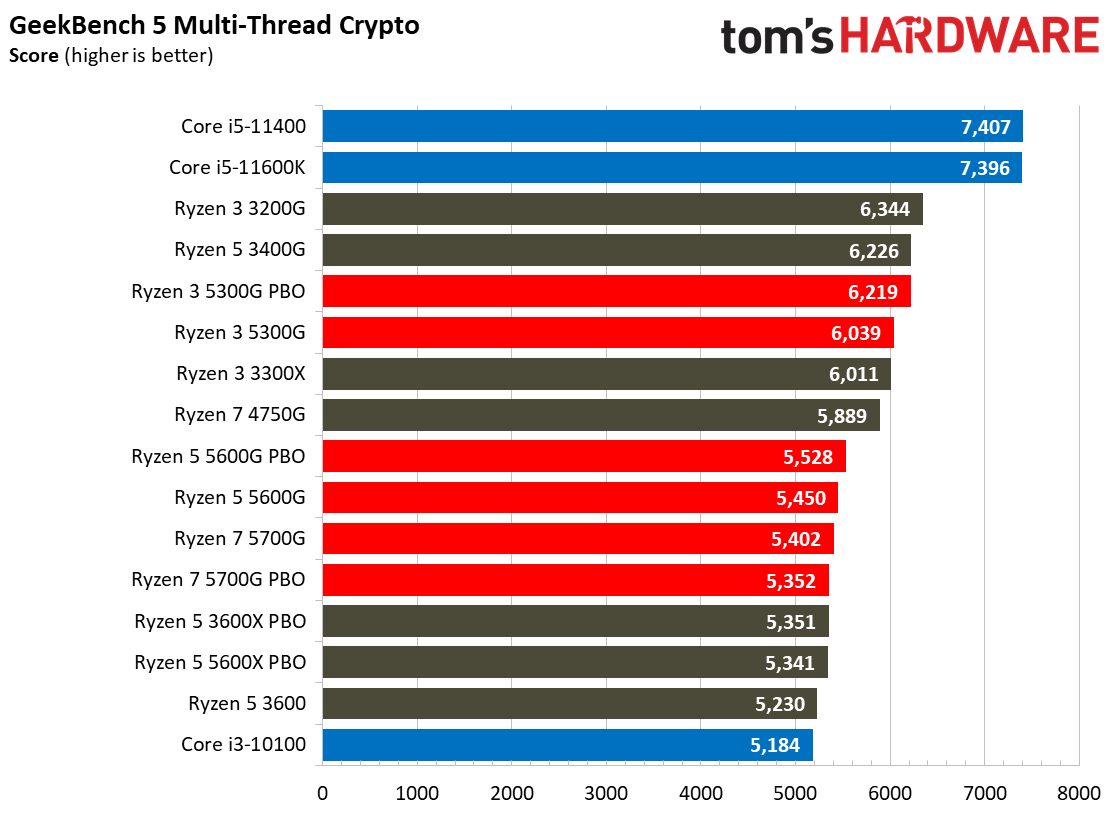
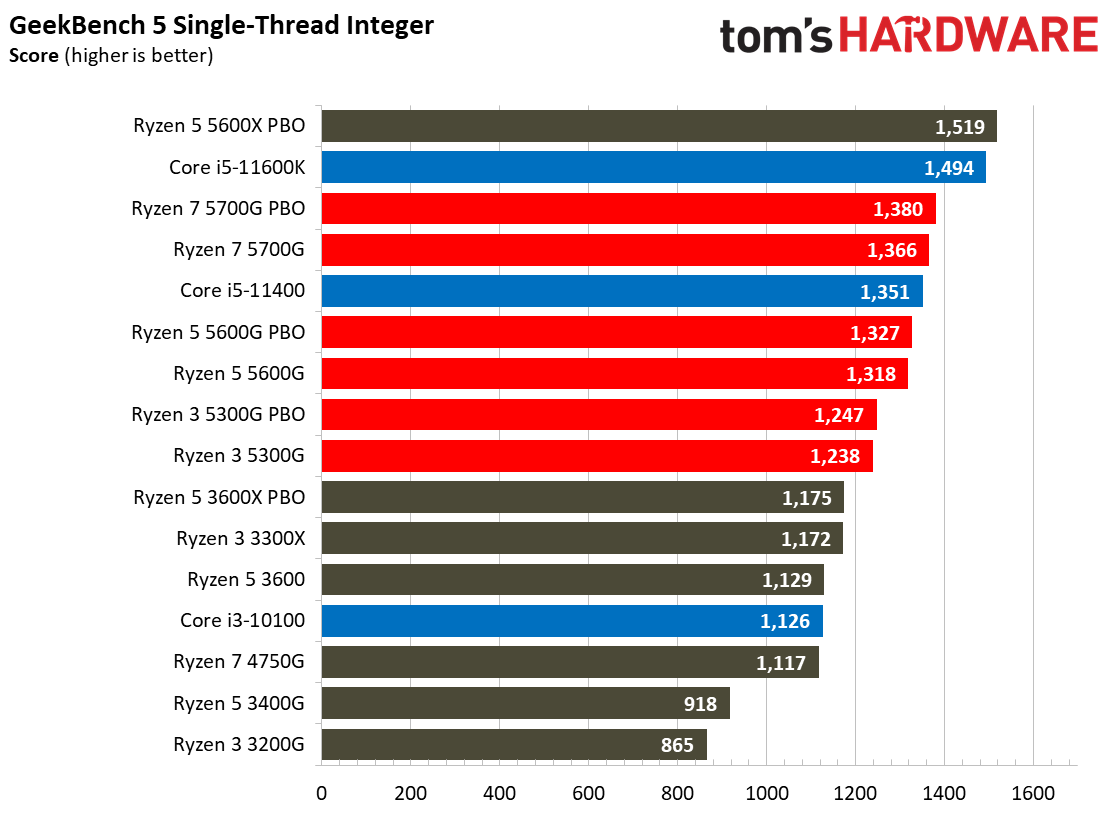
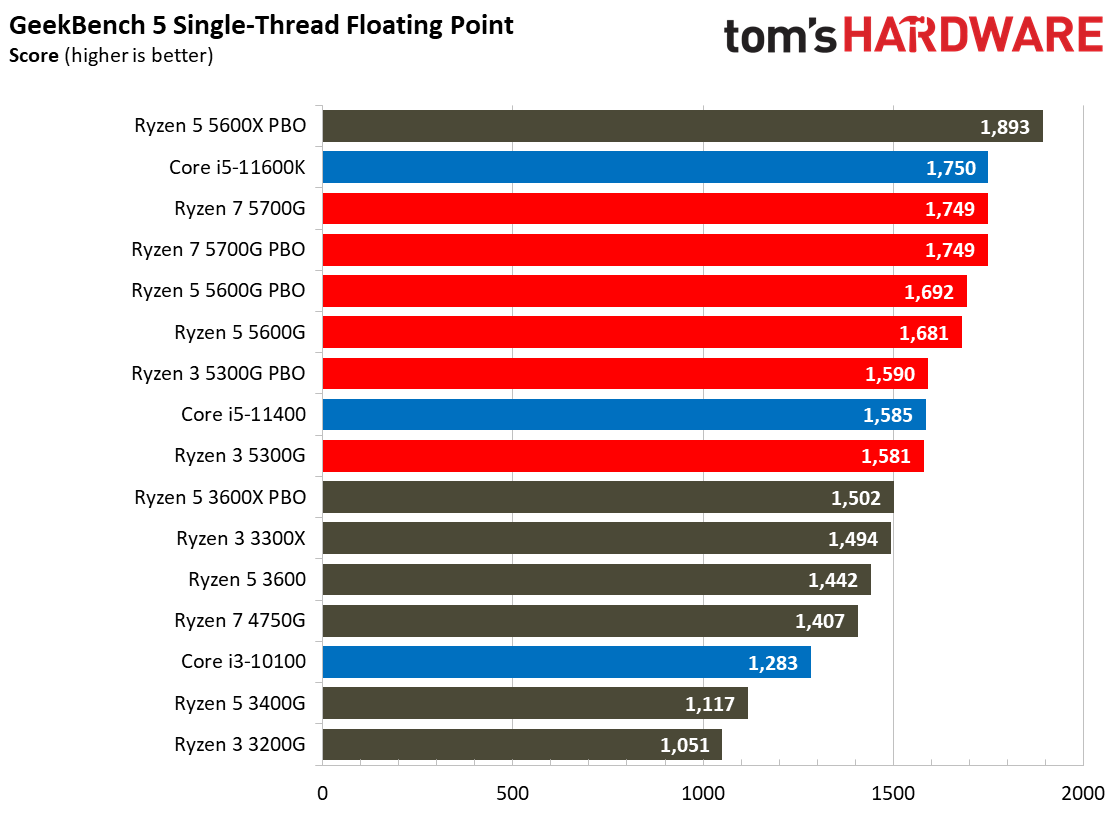

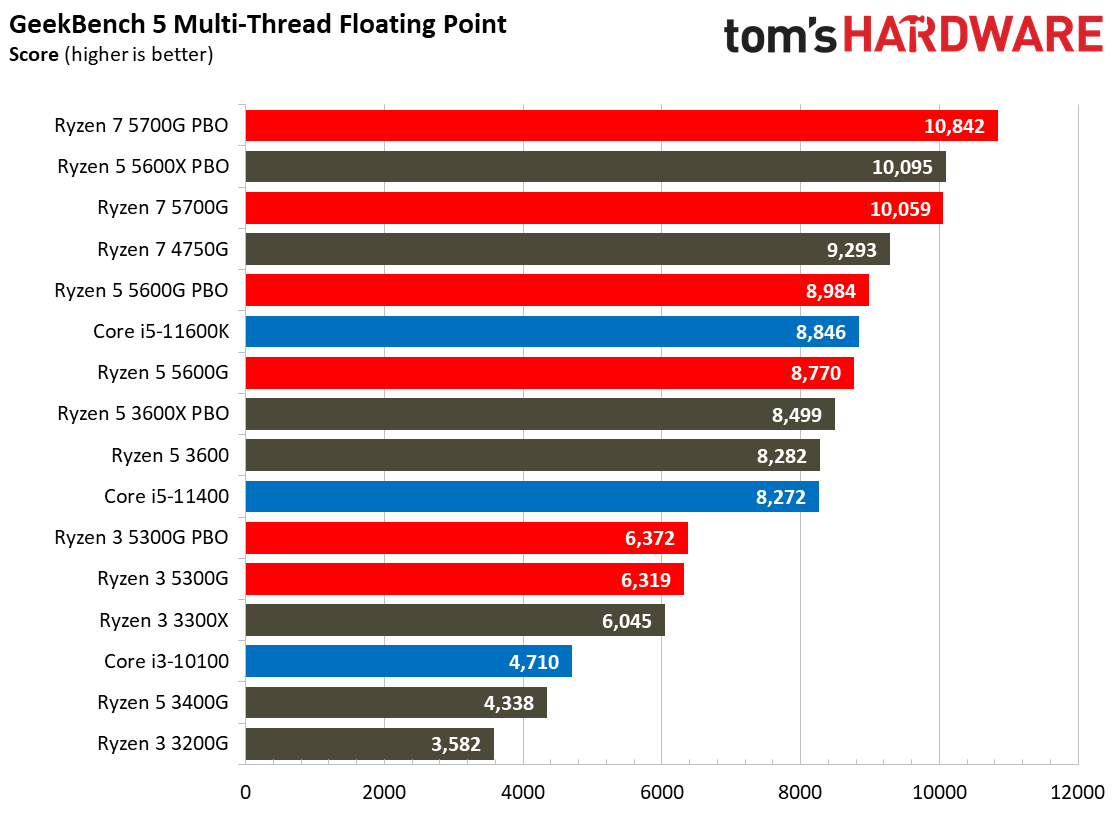
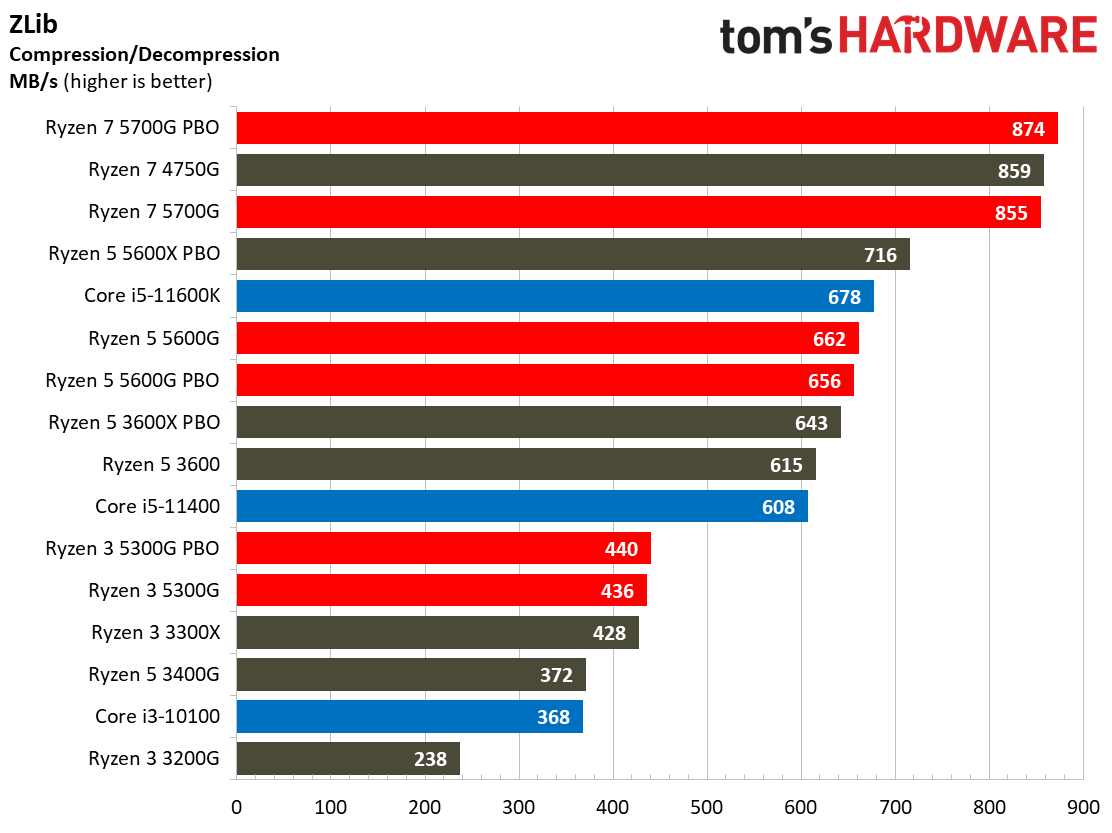




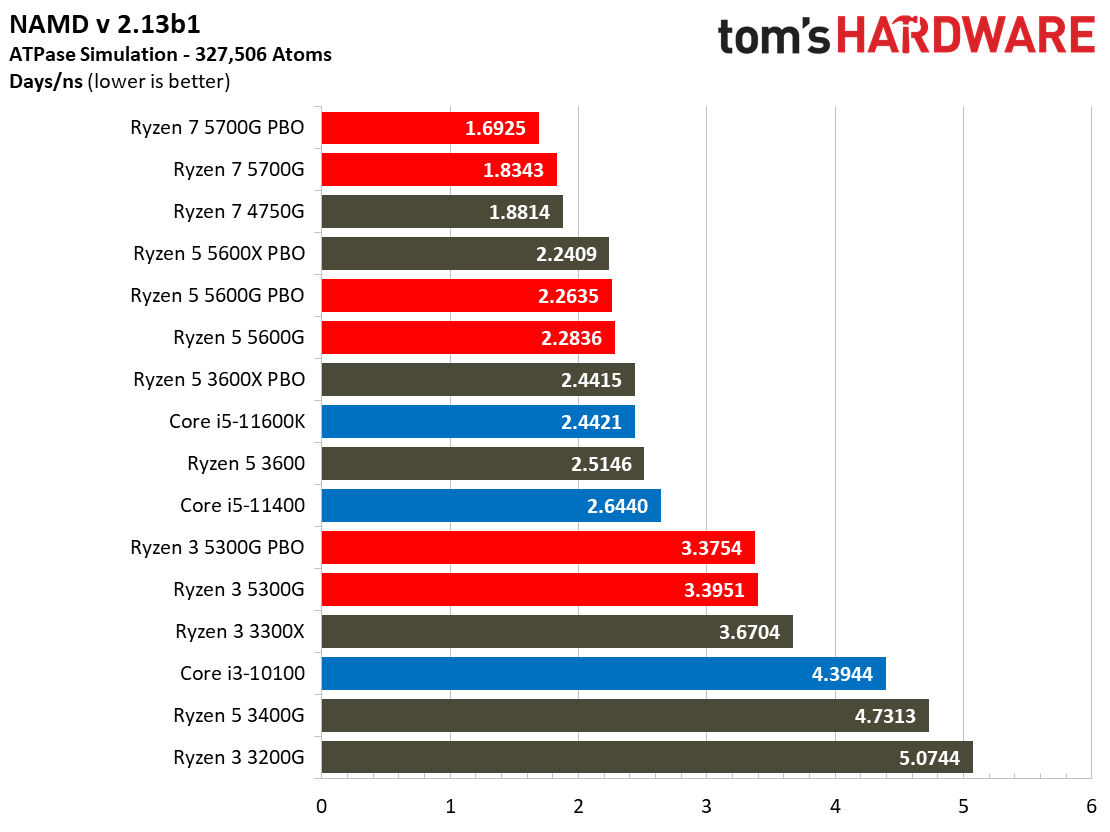
Frankly, most of these tests aren't terribly relevant to the target audience for this class of chip. They're more important for higher-end chips, but we include them for completeness. Nevertheless, the timed LLVM compilation workload, y-cruncher, and NAMD tests do a wonderful job of illustrating the architectural advances AMD has made as it progressed through the Zen+ 3400G and Zen 2 4750G to the Zen 3 APU era with Cezanne.
MORE: Best CPUs for Gaming
MORE: CPU Benchmarks Hierarchy
MORE: AMD vs Intel
MORE: All CPUs Content
Current page: AMD Ryzen 3 5300G Application Benchmarks
Prev Page AMD Ryzen 3 5300G Discrete GPU Gaming Benchmarks Next Page The Budget Market Savior...Maybe
Paul Alcorn is the Editor-in-Chief for Tom's Hardware US. He also writes news and reviews on CPUs, storage, and enterprise hardware.
-
escksu Replyhotaru251 said:i do question how pci 3.0 is a con on a cpu that is focused on being budget option.
ITs a con because all Ryzen APUs are PCIE-3.0, this means 5600G, 5700G all PCI-E3.0.....
The APU was supposdly to be a great product but AMD "castrated" it by literally halving the cache and using PCIE 3.0. On top of that, they use back Vega instead of RDNA....
Now, imagine what the APU would be like if AMD had taken a different approach. The use the same Zen3 with PCIE and full cache and drop in RDNA GPU. It would been a monster. I am find if they sell it more than the non-APU verison. -
Krotow Replyescksu said:Now, imagine what the APU would be like if AMD had taken a different approach. The use the same Zen3 with PCIE and full cache and drop in RDNA GPU. It would been a monster. I am find if they sell it more than the non-APU verison.
Apparently this will appear, but for double price :p -
Gillerer Since TSMC's N7 process is supposed to have great yields, AMD probably doesn't have many APU dies with 3+ faulty cores or 2 faulty CUs to go around.Reply
That means the only reason this 4-core alternative exists is to use up the few failed dies to satisfy their partners' greed; allowing OEMs to produce low-cost systems they can overcharge for.
AMD have stated that the 5300G will not be coming to the DYI market. Even if it did, the price would certainly not be anywhere near $150 - somewhere around $189 - $219 would be more likely, to get a similar price hike as all previous Zen 3 products.
escksu said:ITs a con because all Ryzen APUs are PCIE-3.0, this means 5600G, 5700G all PCI-E3.0.....
The APU was supposedly to be a great product but AMD "castrated" it by literally halving the cache and using PCIE 3.0. On top of that, they use back Vega instead of RDNA....
Now, imagine what the APU would be like if AMD had taken a different approach. The use the same Zen3 with PCIE and full cache and drop in RDNA GPU. It would been a monster. I am find if they sell it more than the non-APU verison.
If this had as much L3 cache as the desktop CPUs, PCIe 4 and a RDNA GPU, it certainly would be a monster - in terms of die area, power consumption and cost. No OEM would use it, or alternatively AMD would have to cut their margins severely.
This is based on what is primarily a laptop APU. Desktop comes as an afterthought, so all design decisions are made with the laptop experience and ease of integration (by OEMs) in mind. -
zodiacfml well the 3300x is now overpriced and hard to find and higher end Ryzens increased in price recently. this will fare worse.Reply -
10tacle Well heck. I am planning on building an entry level gaming PC for my 13 year old nephew as a Christmas gift (he knows of the shortages of both GPUs and PS5 consoles and the root causes of why). He'll be inheriting my old GTX 1080 Ti from my 1440p rig finally being put out to pasture, but I want to give him the peace of mind in these impossible GPU times to have a backup option for iGPU gaming should that 1080 Ti go belly up. The Ryzen 3 is right up that alley and a much better performance value than the Intel i3 but this is unfortunate. As zodiacfml said above, now the 3300x is priced into what I'd traditionally consider Ryzen 5 and Intel i5 territory. Amazon and NewEgg have it right now for $239 -- and that's a year and a half old chip originally priced at $120! I guess this is the new normal now. It used to be we could always fall back on consoles for gaming if the PC market got crazy but we don't even have that as an option now.Reply -
logainofhades Reply10tacle said:Well heck. I am planning on building an entry level gaming PC for my 13 year old nephew as a Christmas gift (he knows of the shortages of both GPUs and PS5 consoles and the root causes of why). He'll be inheriting my old GTX 1080 Ti from my 1440p rig finally being put out to pasture, but I want to give him the peace of mind in these impossible GPU times to have a backup option for iGPU gaming should that 1080 Ti go belly up. The Ryzen 3 is right up that alley and a much better performance value than the Intel i3 but this is unfortunate. As zodiacfml said above, now the 3300x is priced into what I'd traditionally consider Ryzen 5 and Intel i5 territory. Amazon and NewEgg have it right now for $239 -- and that's a year and a half old chip originally priced at $120! I guess this is the new normal now. It used to be we could always fall back on consoles for gaming if the PC market got crazy but we don't even have that as an option now.
There is always a chance of finding something, on the used market. Personally, for a new gaming rig, I wouldn't go below a 6c/12t chip. Games are becoming more core/thread heavy. -
Gillerer Replylogainofhades said:There is always a chance of finding something, on the used market. Personally, for a new gaming rig, I wouldn't go below a 6c/12t chip. Games are becoming more core/thread heavy.
If thinking of "finding something on the used market", it's important to remember that cores are not created equal, and the number of cores is not the be-all and end-all - it's the overall performance of the CPU that counts.
E.g. for a pure gaming build, I wouldn't pick Ryzen 5 1600, 1600AF or a 2600 (each 6c/12t) over a 10th gen Core i3 (4c/8t).
*
@10tacke:
Overall, the 10th gen Intel Cores are really good value right now (as long as stock lasts... which they might not until Christmas), and something like an i5-10400F or 10400 (depending on whether you need an iGPU) would be a really good gaming CPU paired with the 1080Ti.
I wouldn't count on any iGPU to be a "backup gaming option". Once you're used to dGPU performance, the most one will offer is a "backup desktop/productivity/debugging option". -
10tacle ReplyGillerer said:@10tacke: Overall, the 10th gen Intel Cores are really good value right now (as long as stock lasts... which they might not until Christmas), and something like an i5-10400F or 10400 (depending on whether you need an iGPU) would be a really good gaming CPU paired with the 1080Ti.
I wouldn't count on any iGPU to be a "backup gaming option". Once you're used to dGPU performance, the most one will offer is a "backup desktop/productivity/debugging option".
Well again we are in lean meat times. My nephew has grown up watching me PC game and upgrade PC hardware as well as get involved with PS3/4 gaming. He has had nearly a year now to fully understand what is going on with hardware shortages and to expect to be disappointed. If my 1080 Ti craps out next year and we are still in this hardware shortage mess as most analysts predict, he'll at least be informed on why he can't get a new GPU (or PS5). He'll just have to game at 720p. I'm also helping my nephew understand the term "first world problems." Problems as in be happy and make do with what you have like I grew up with and our forefathers did as well.